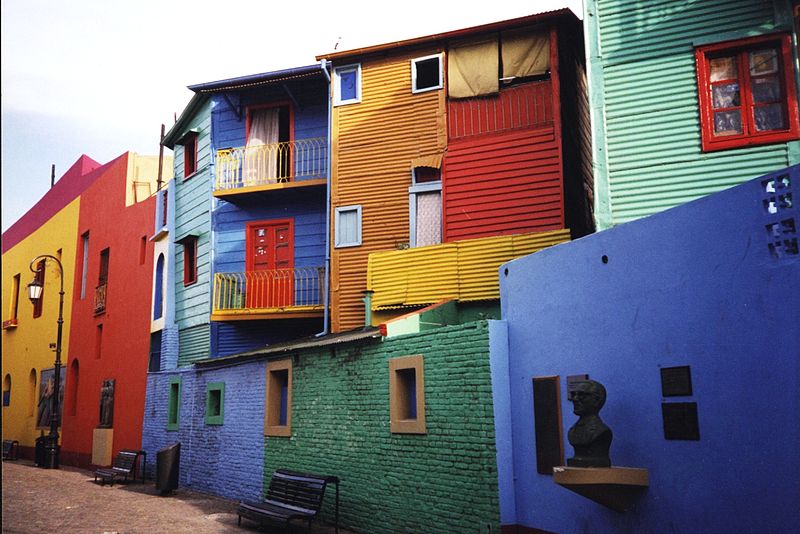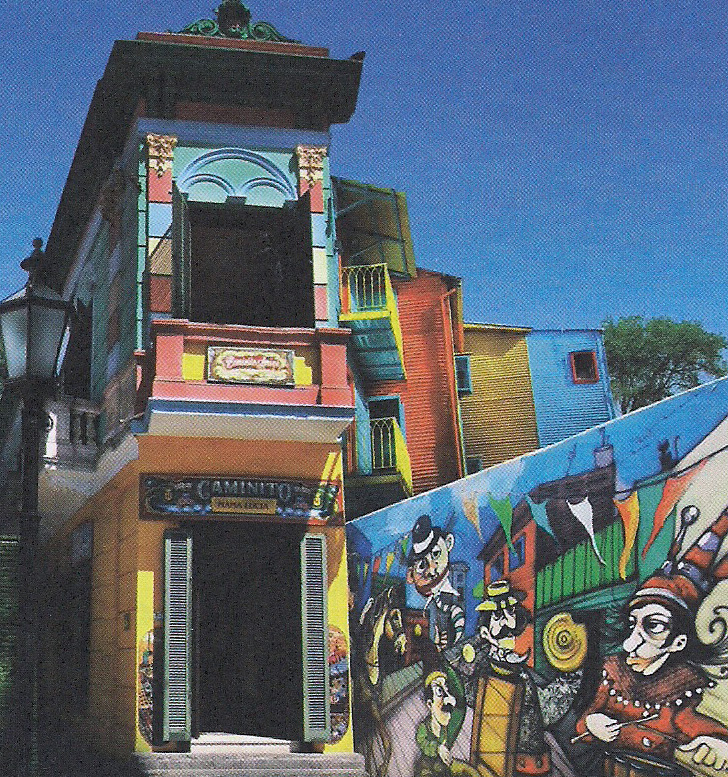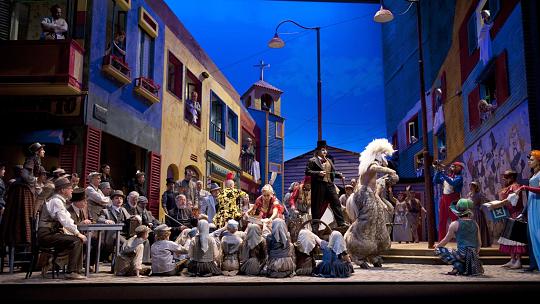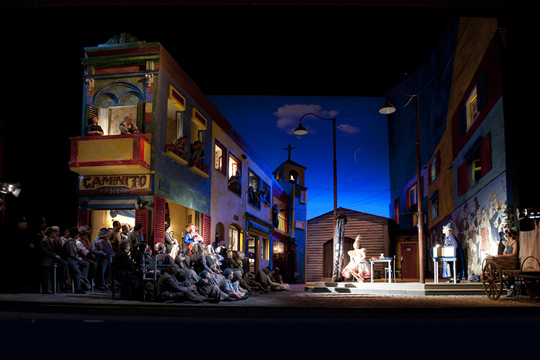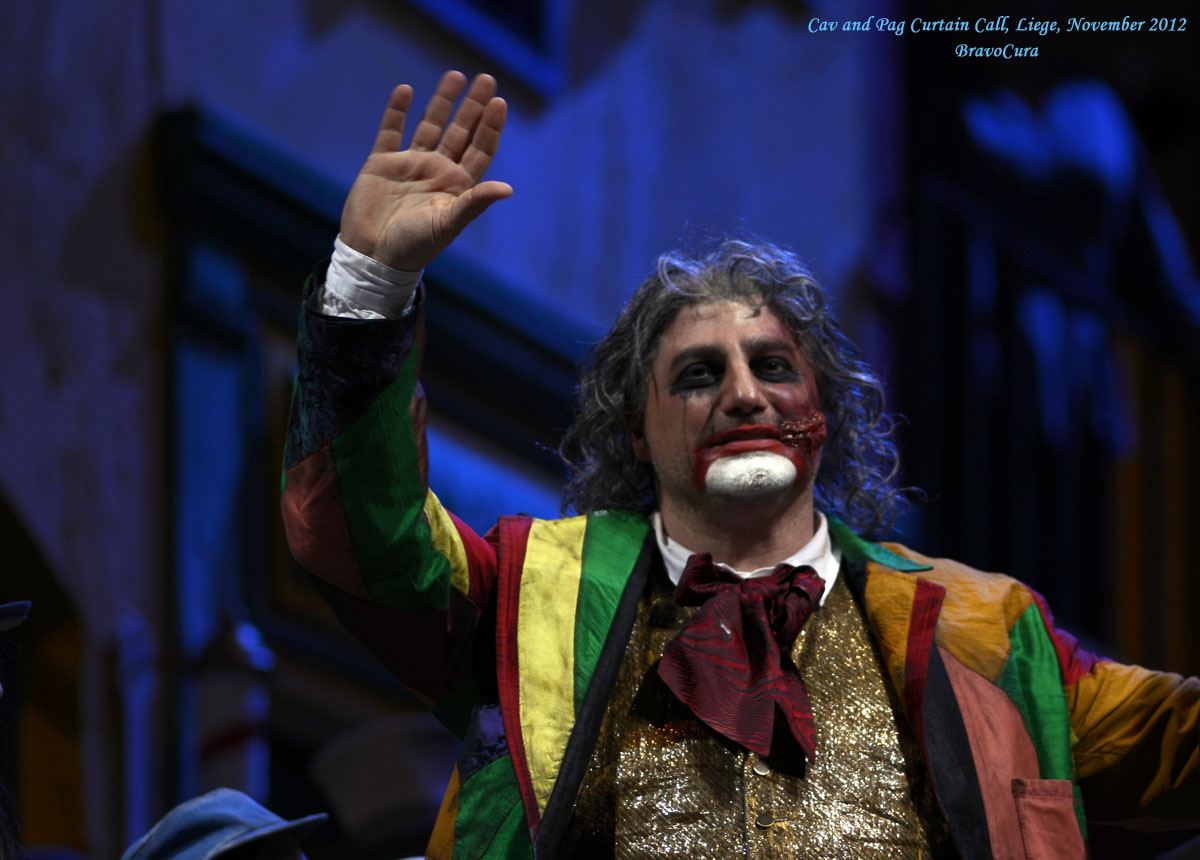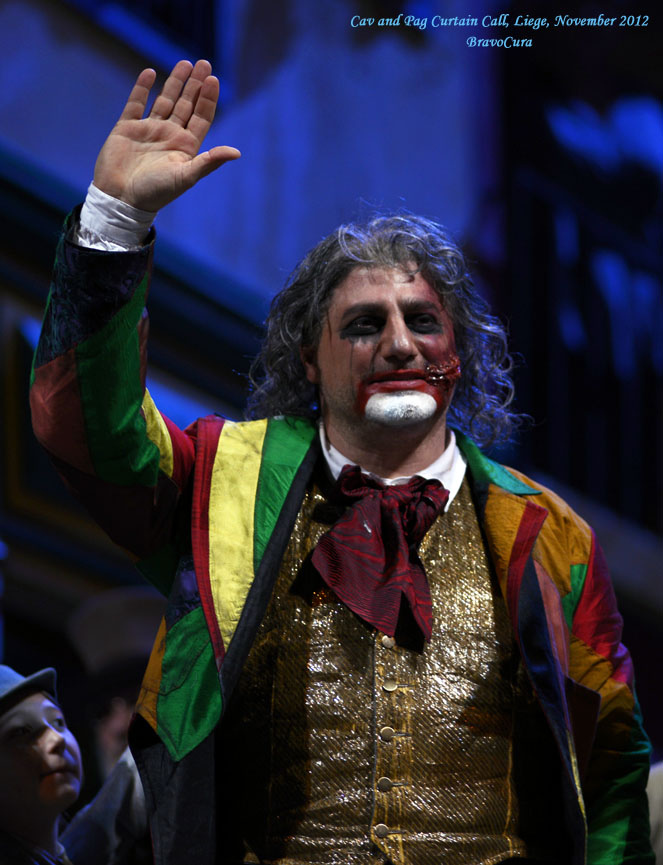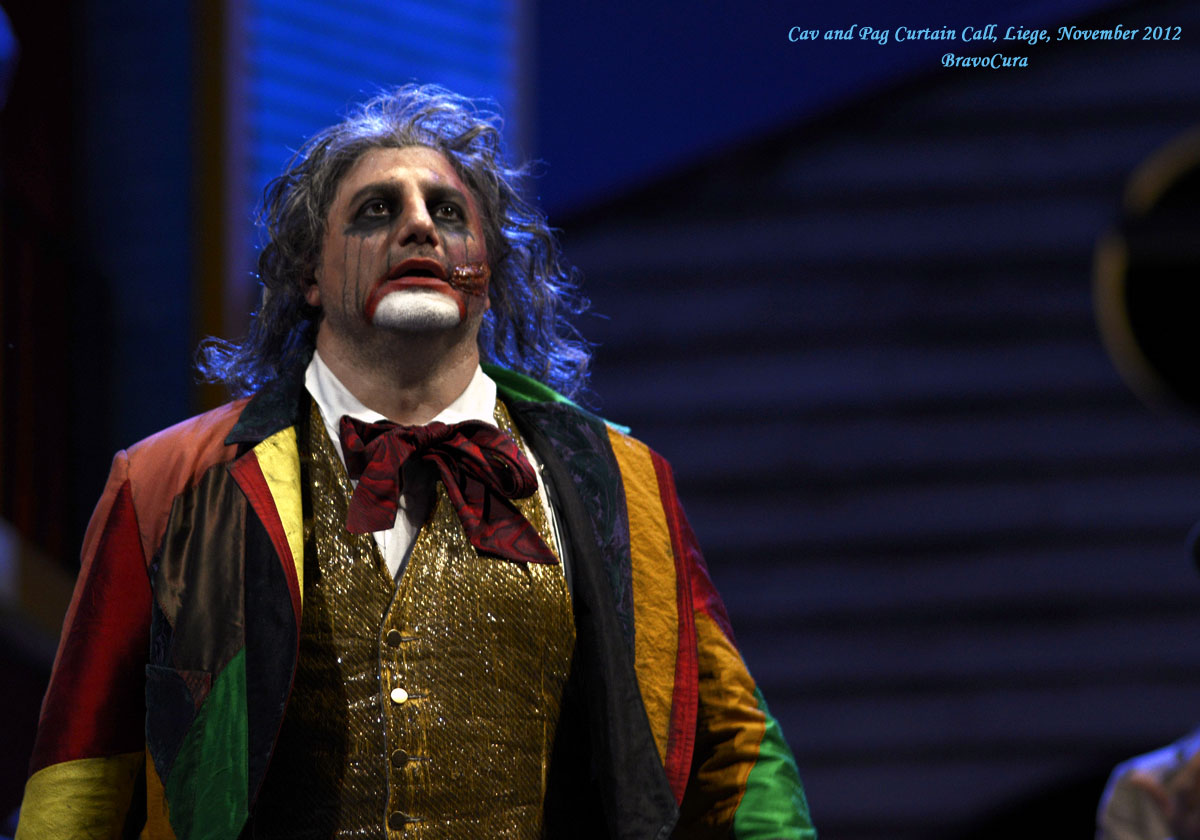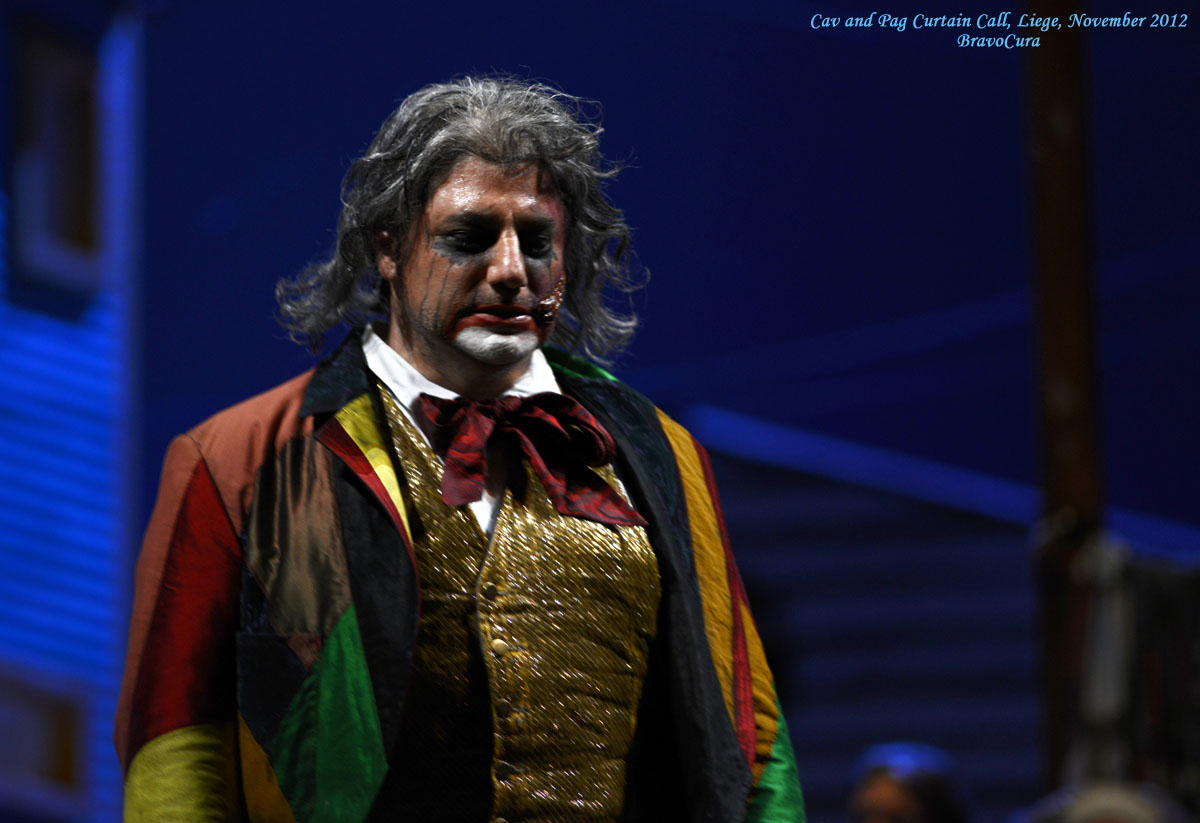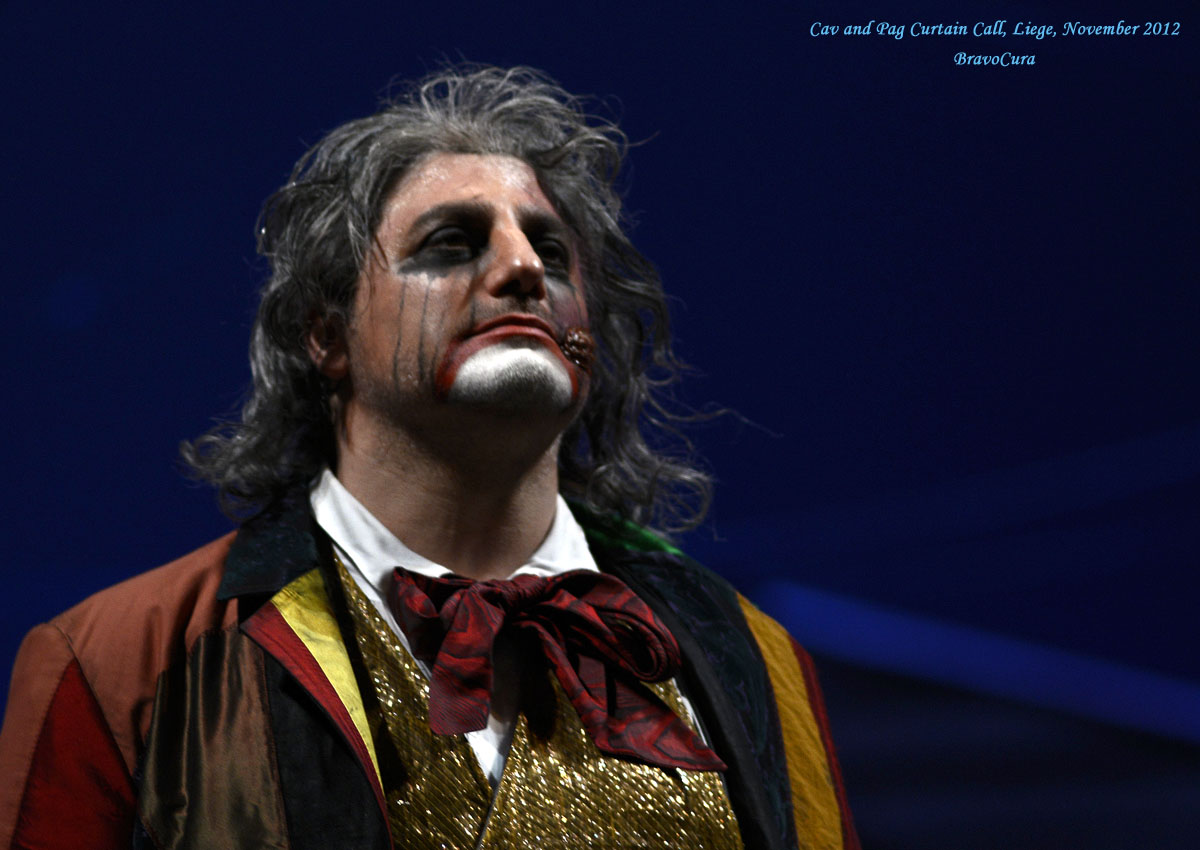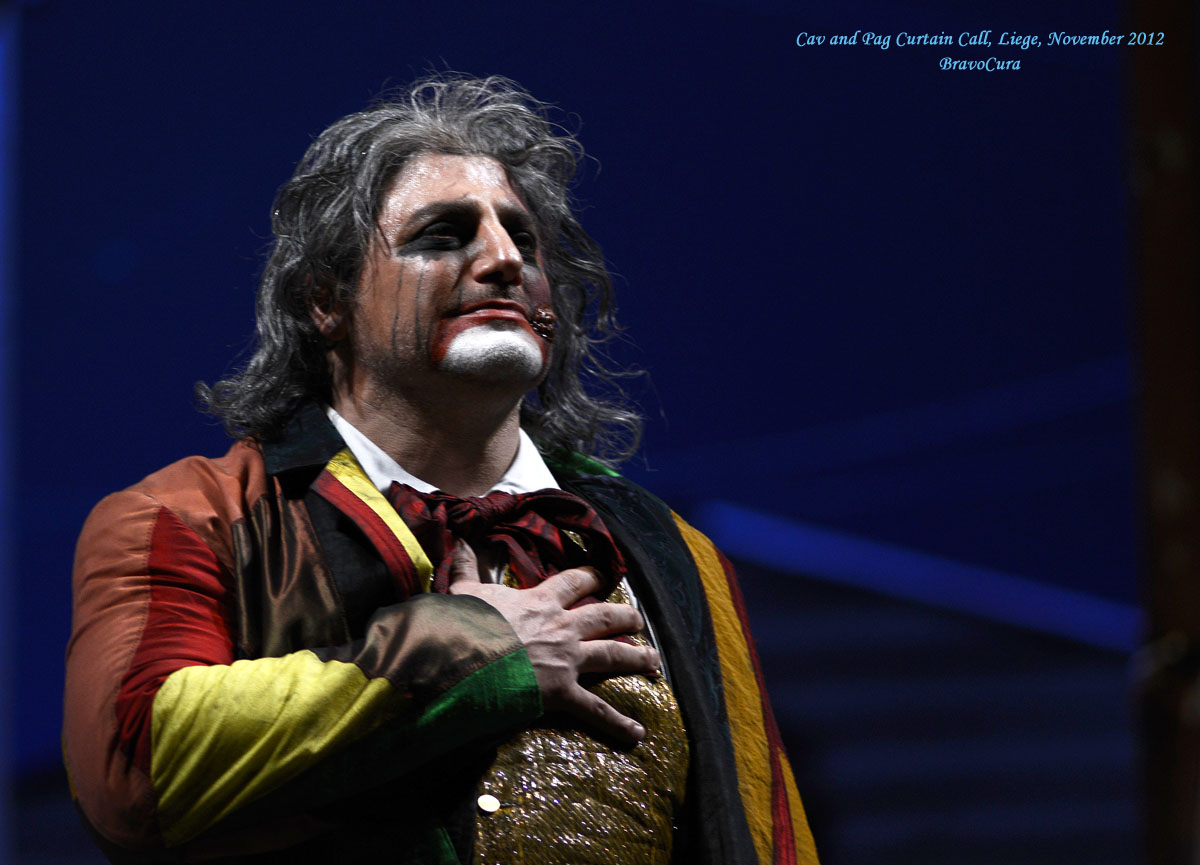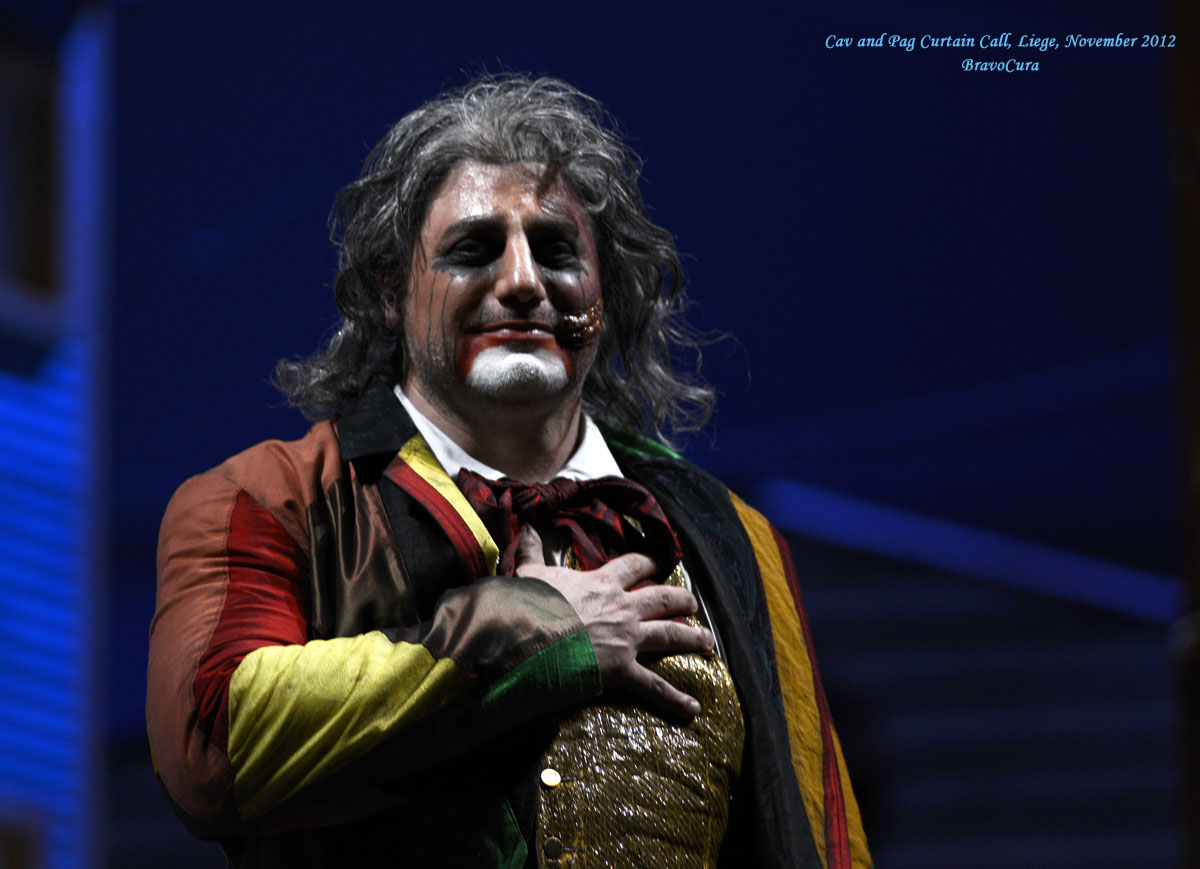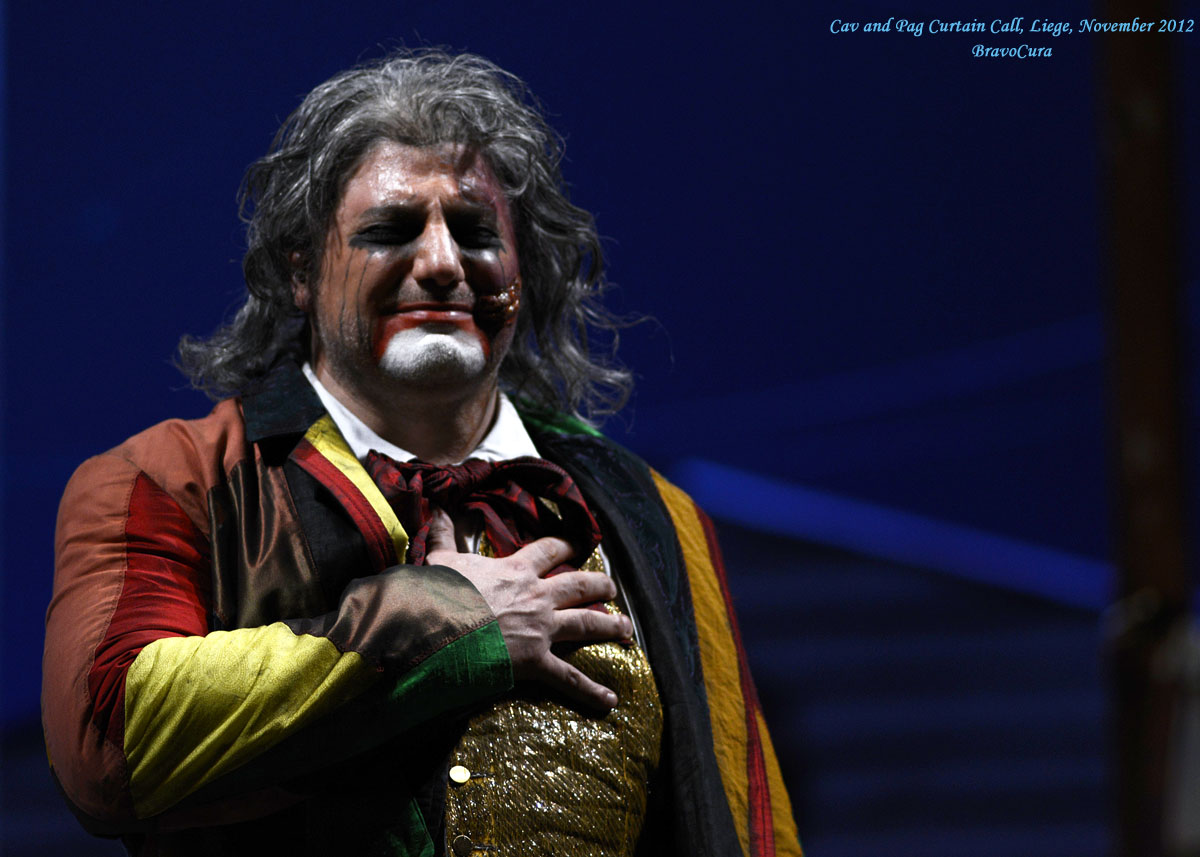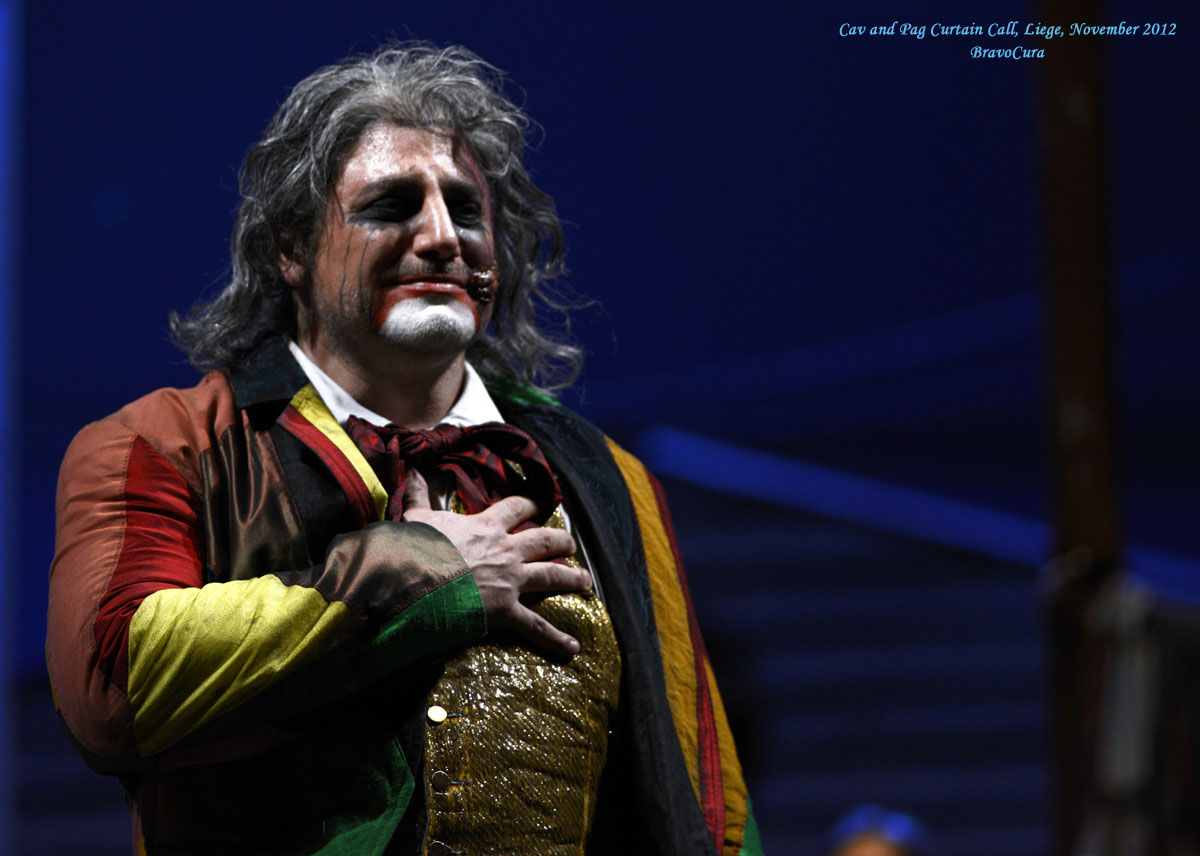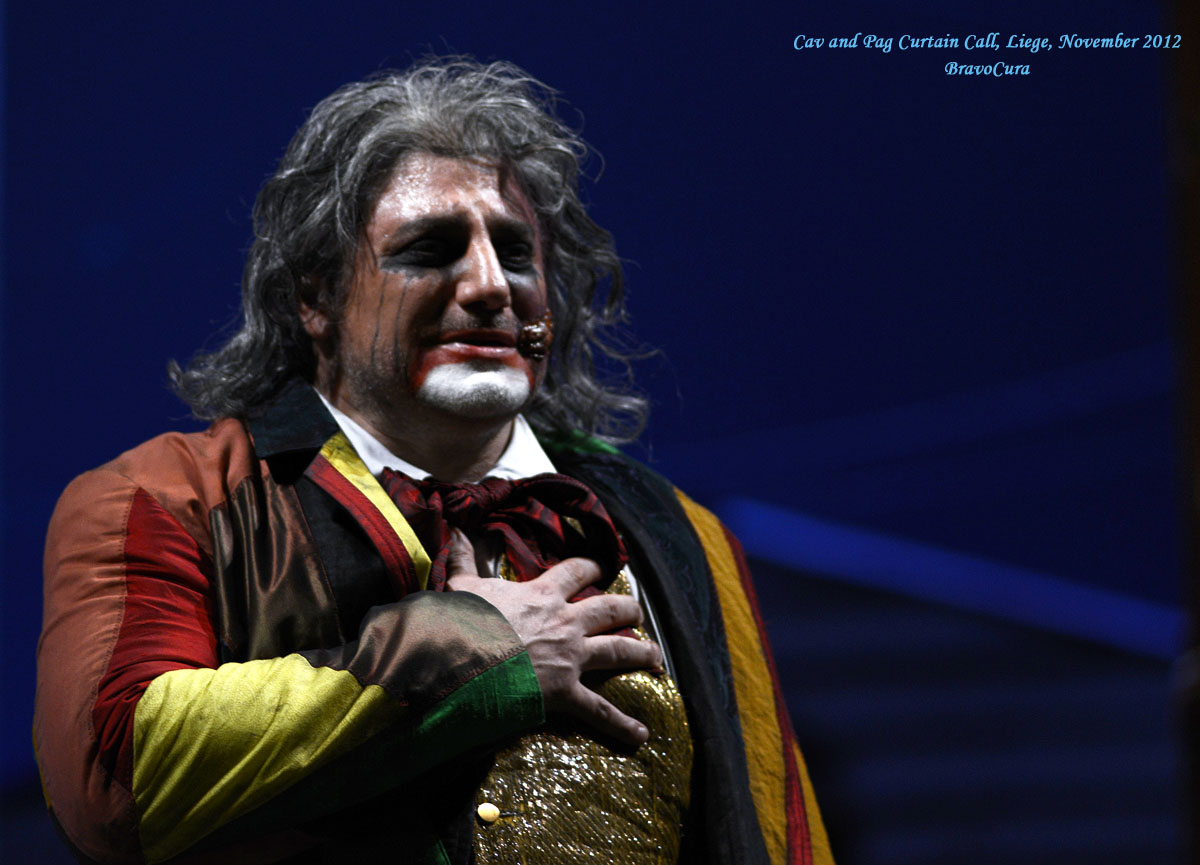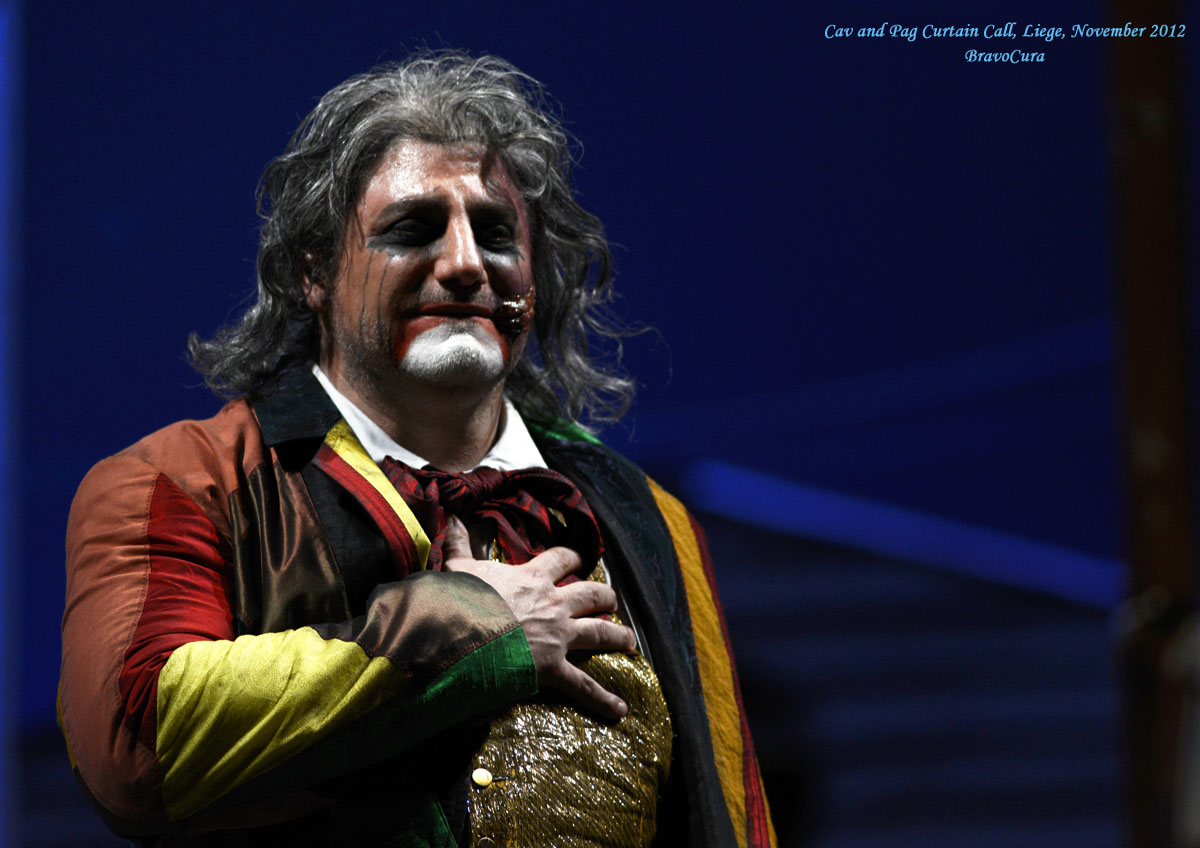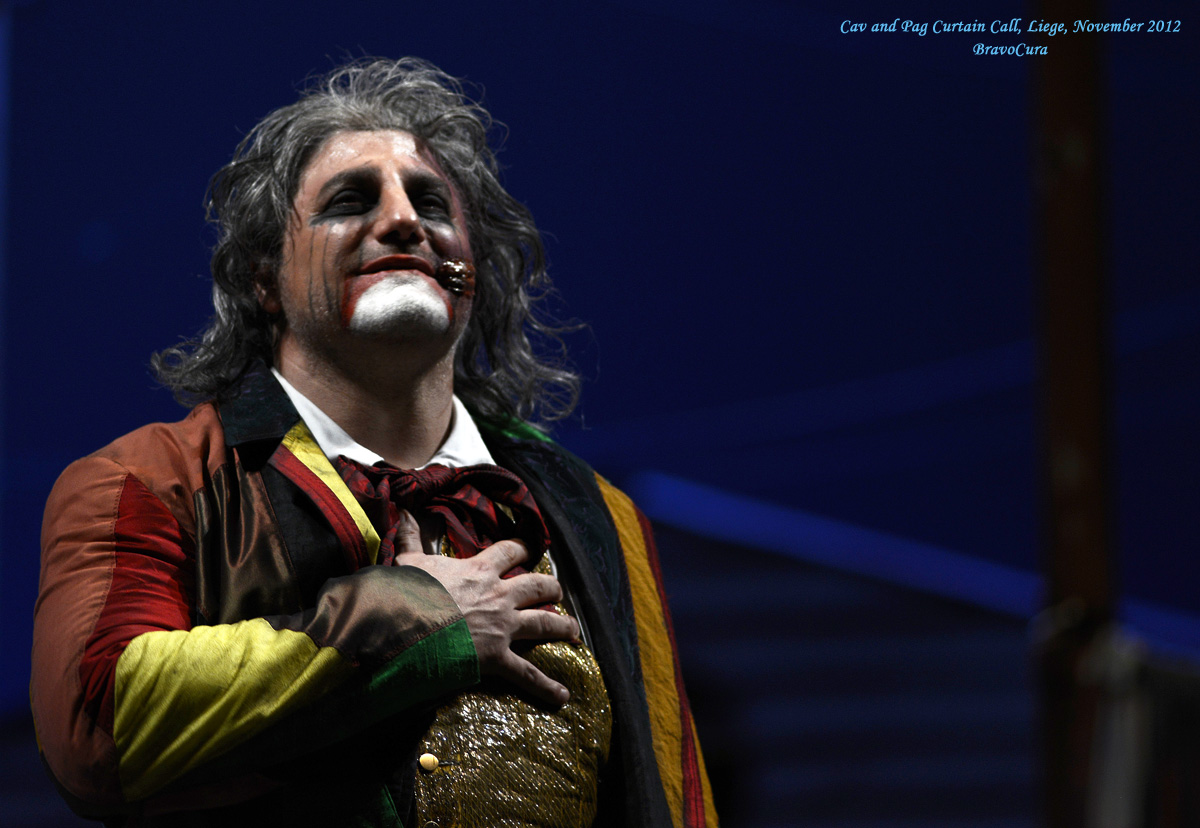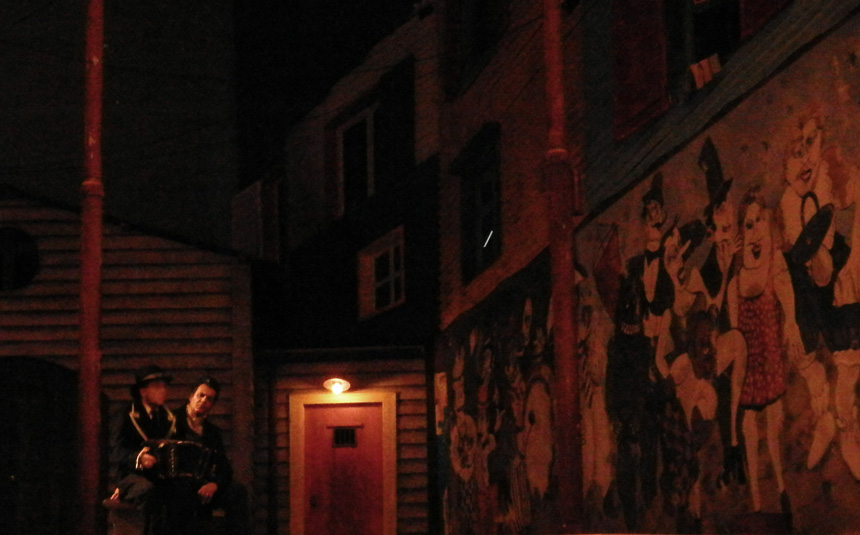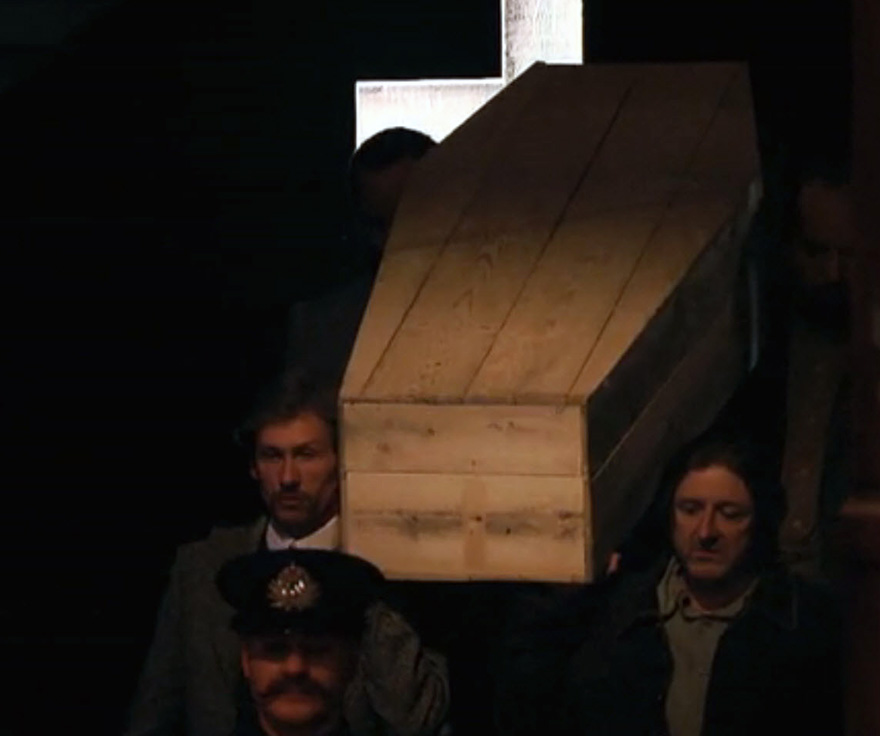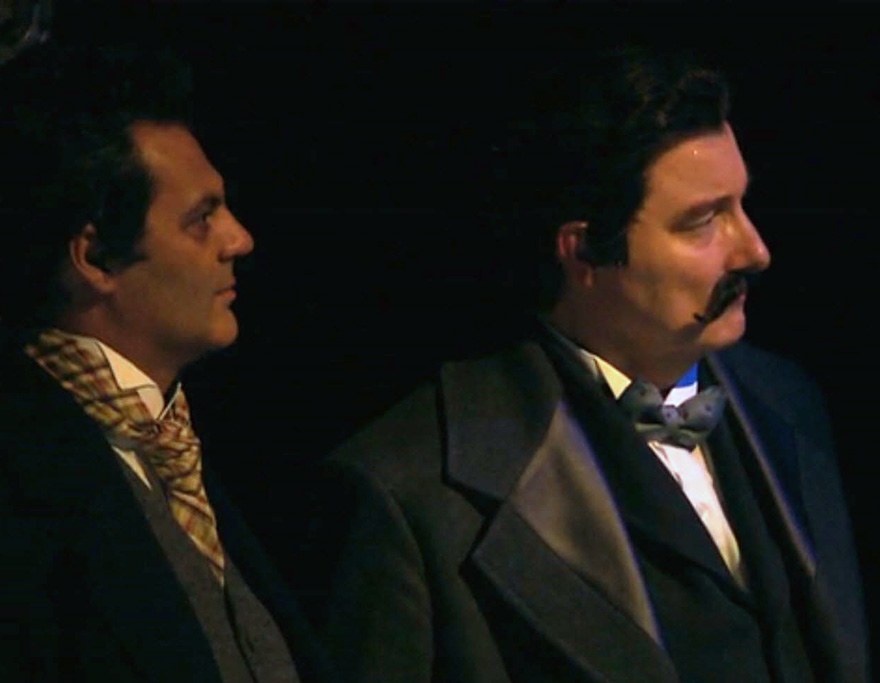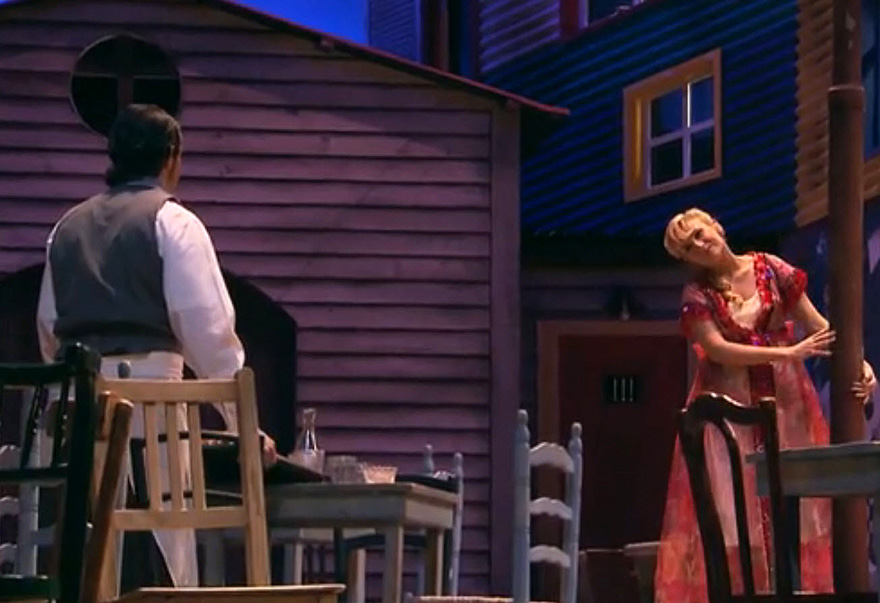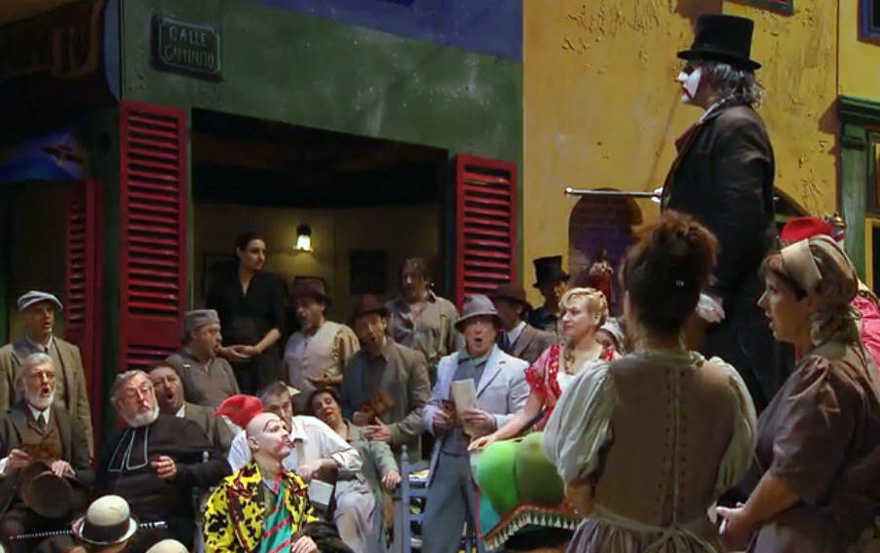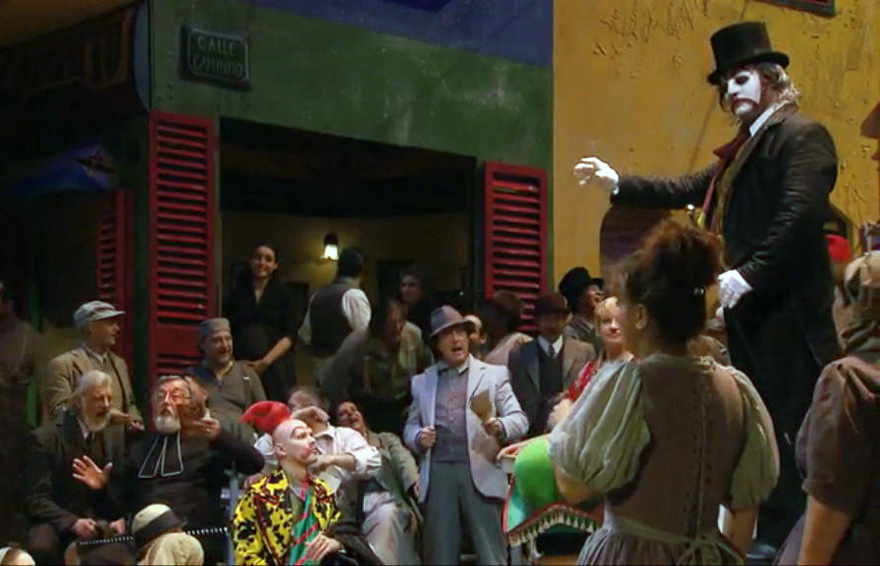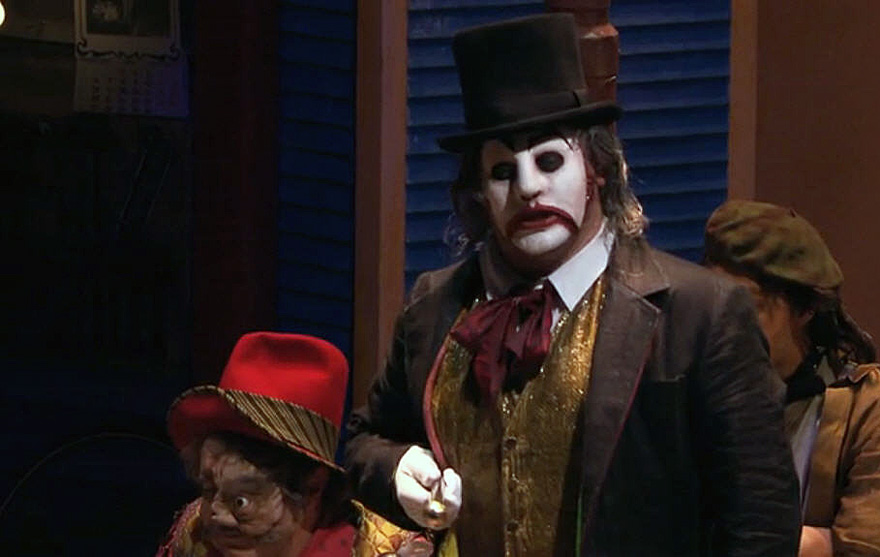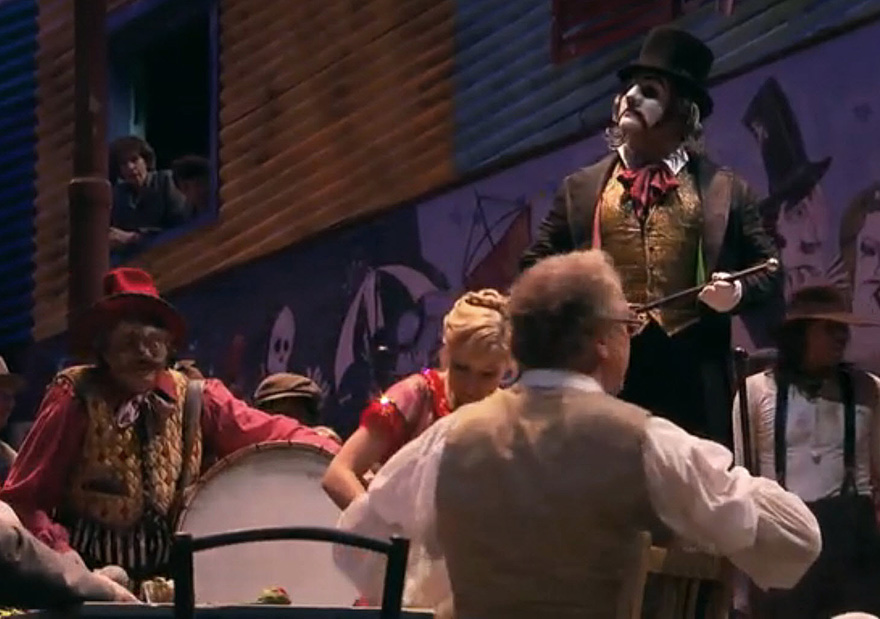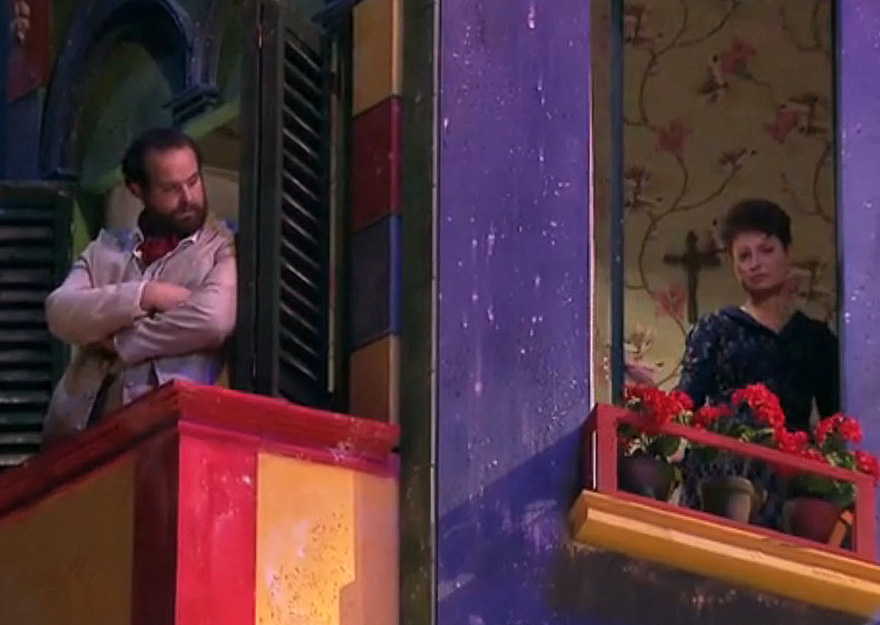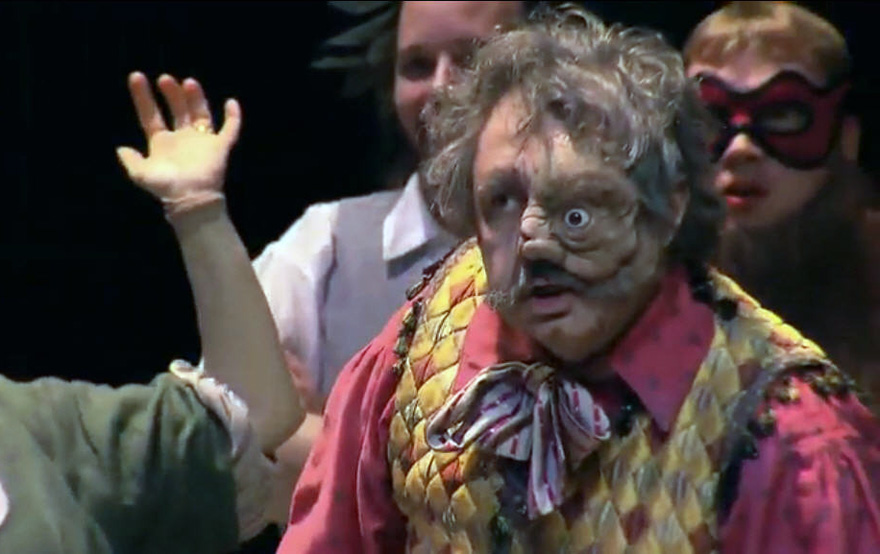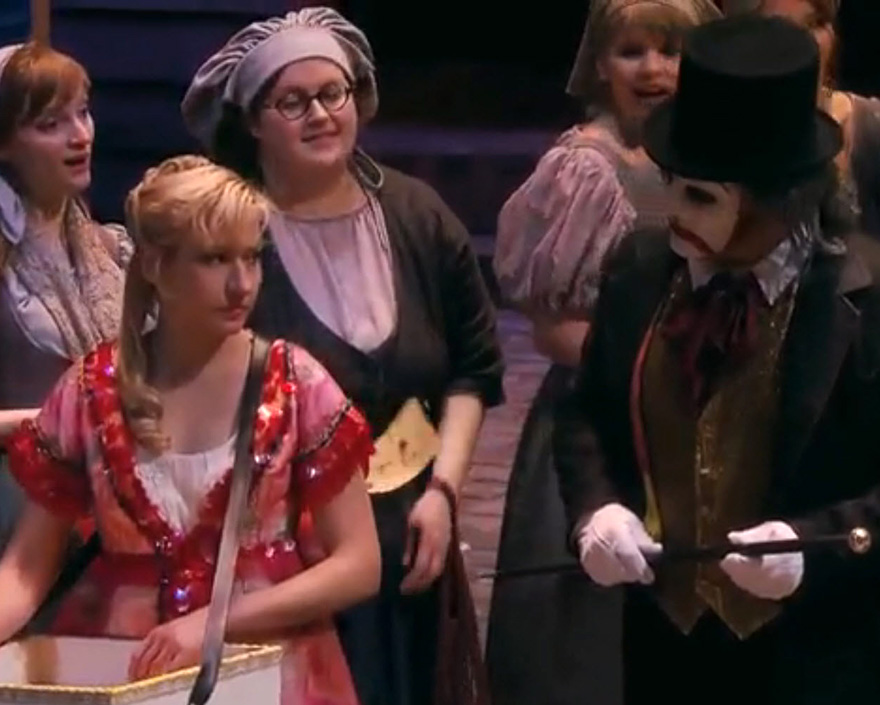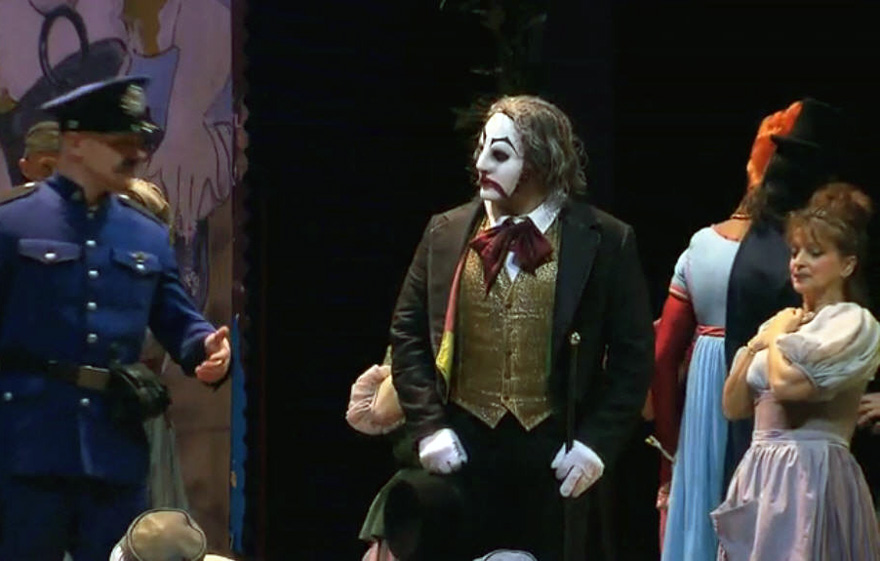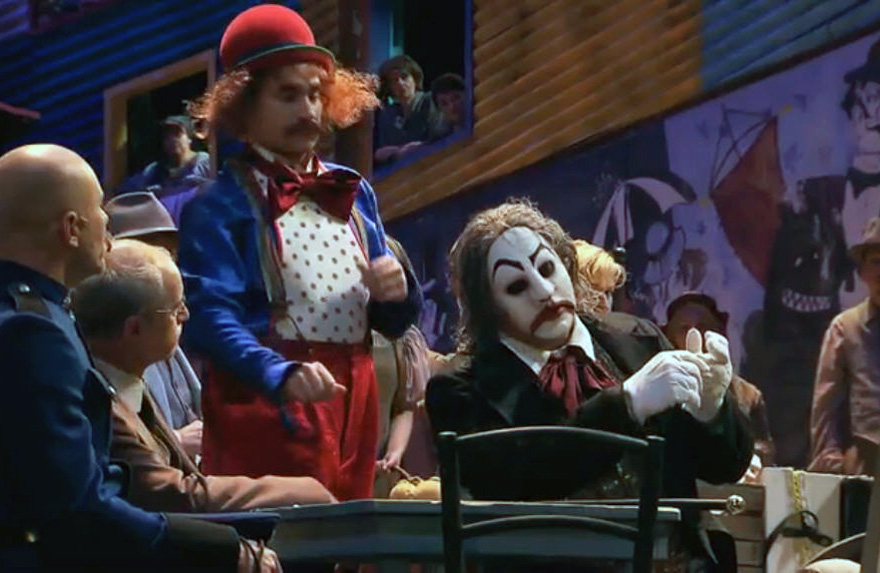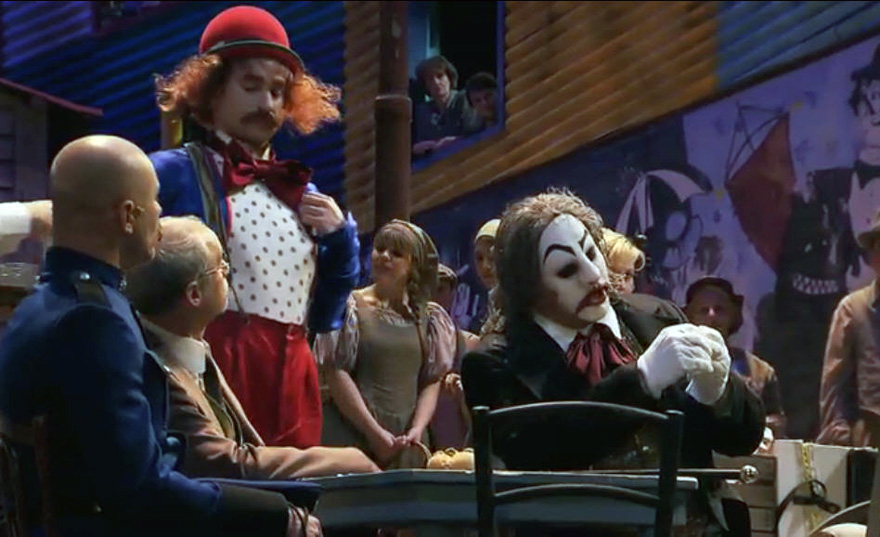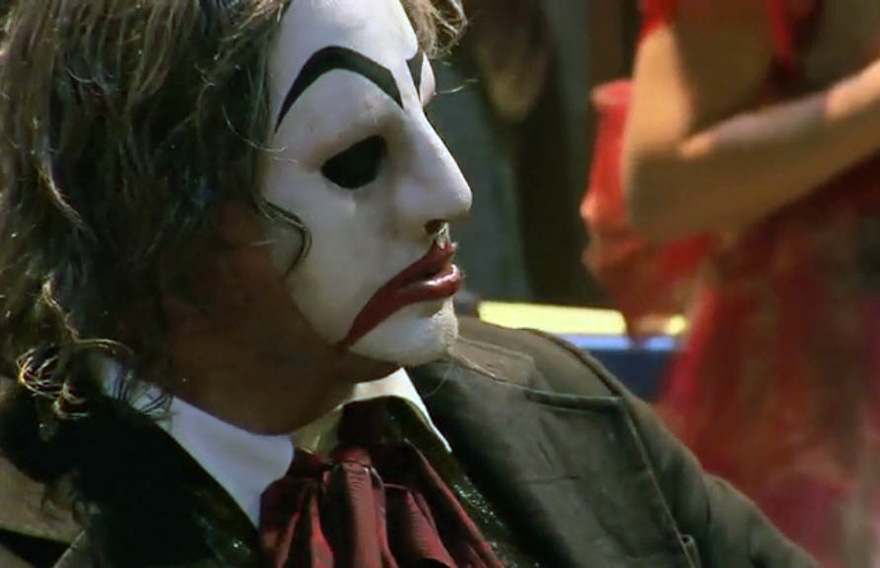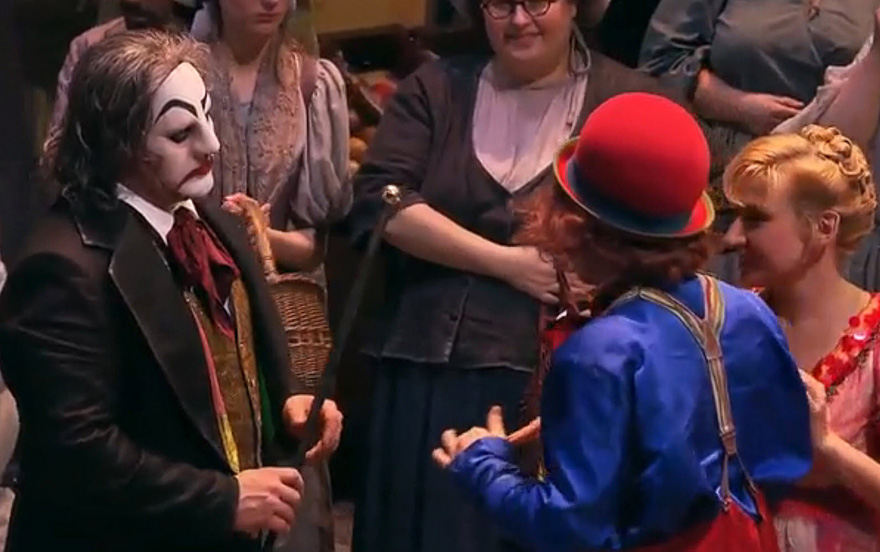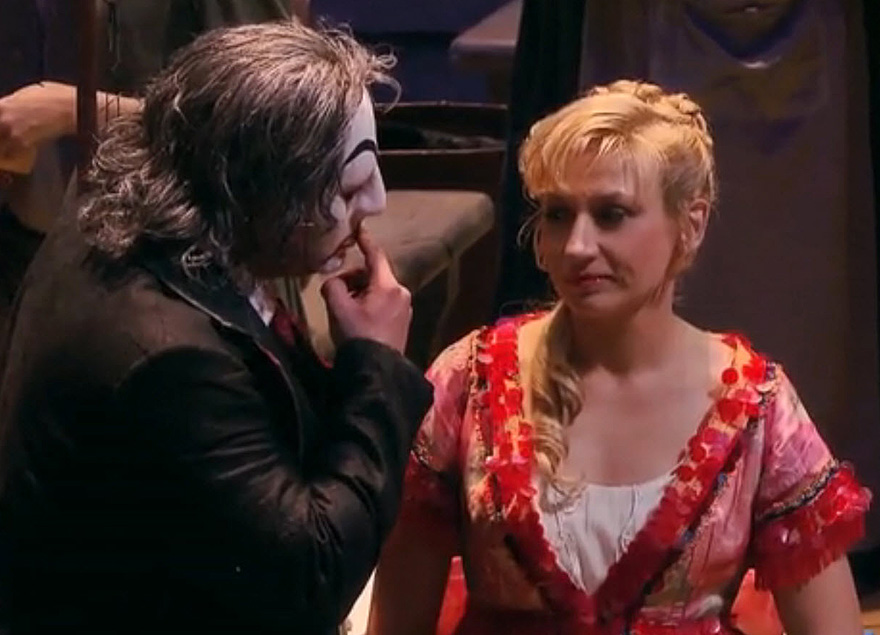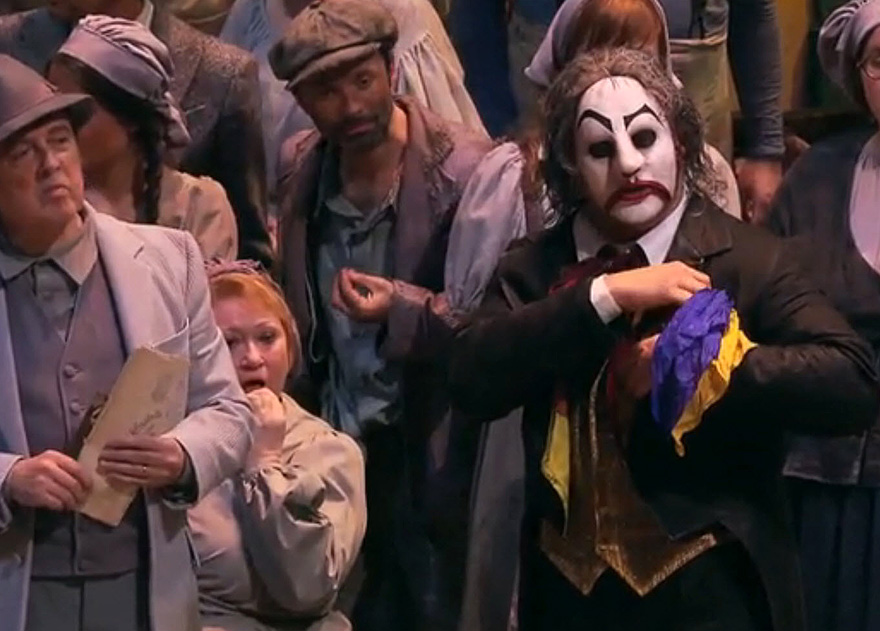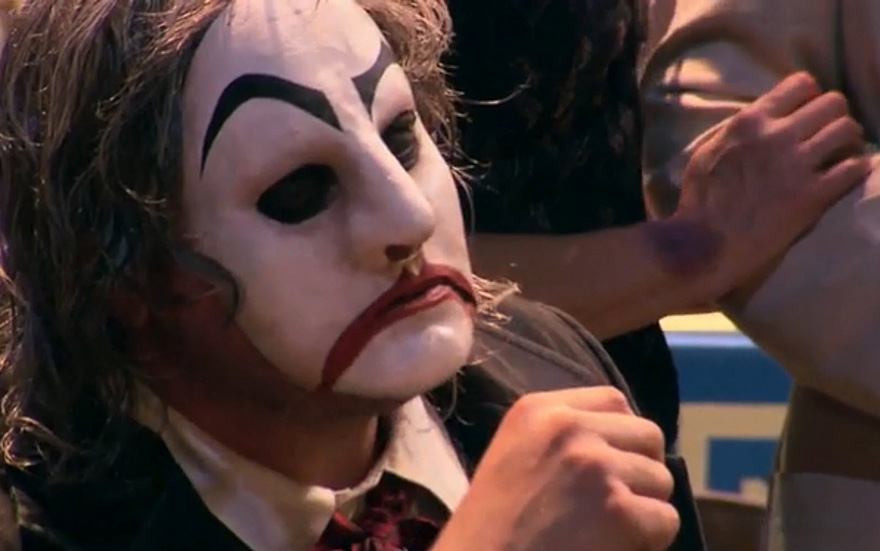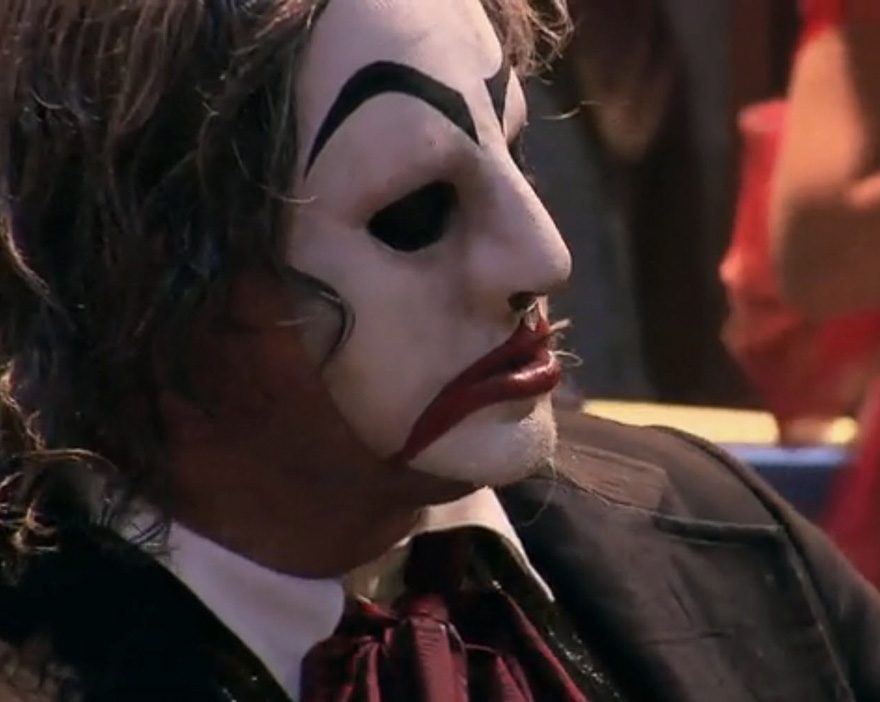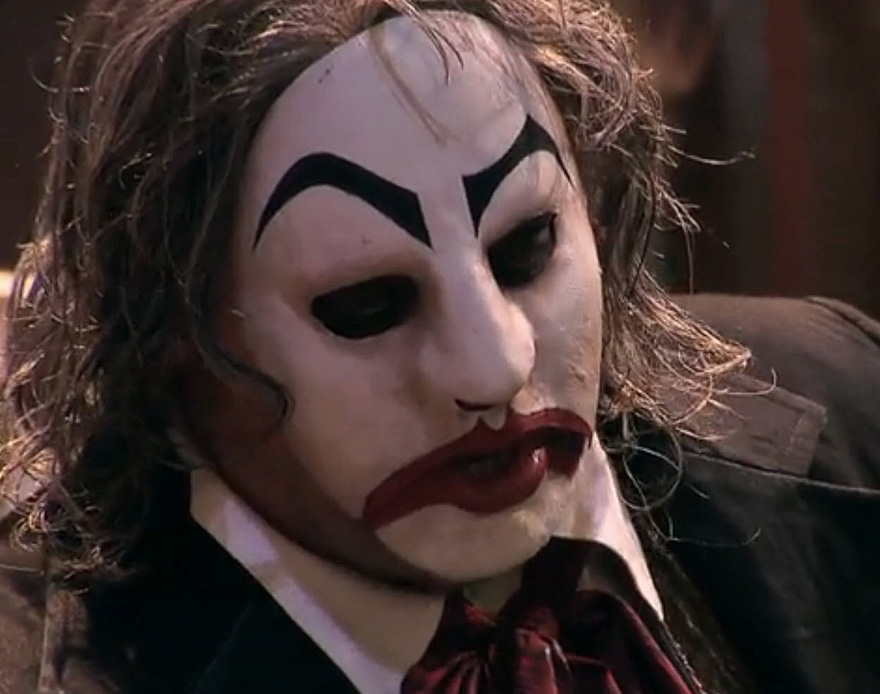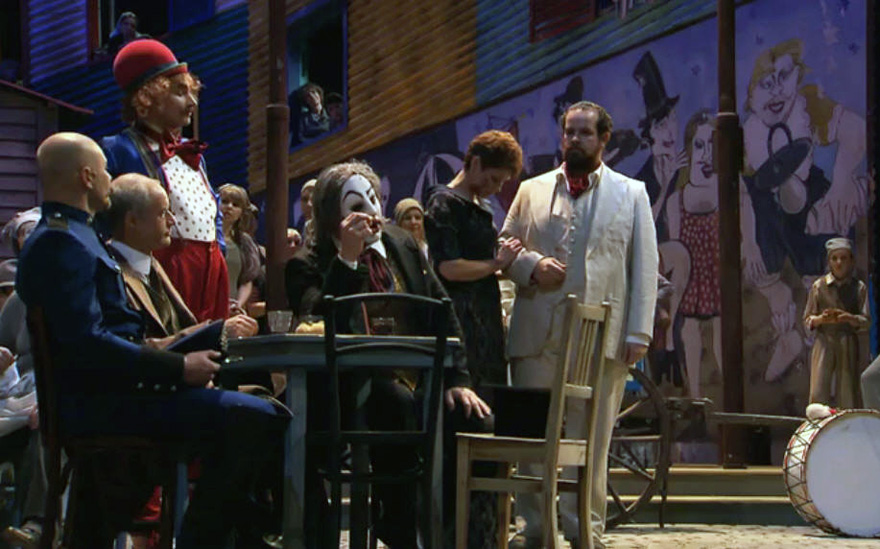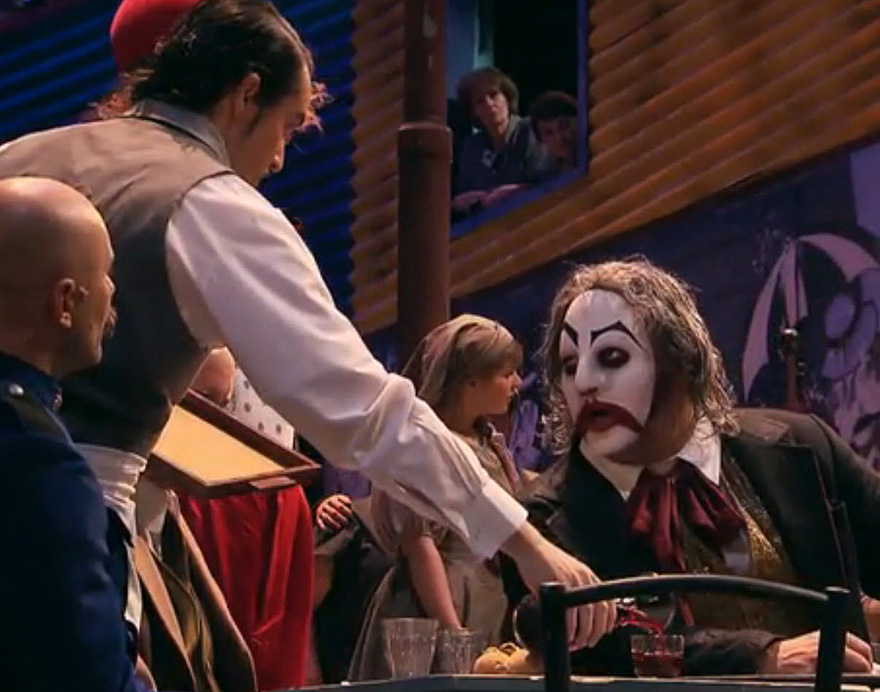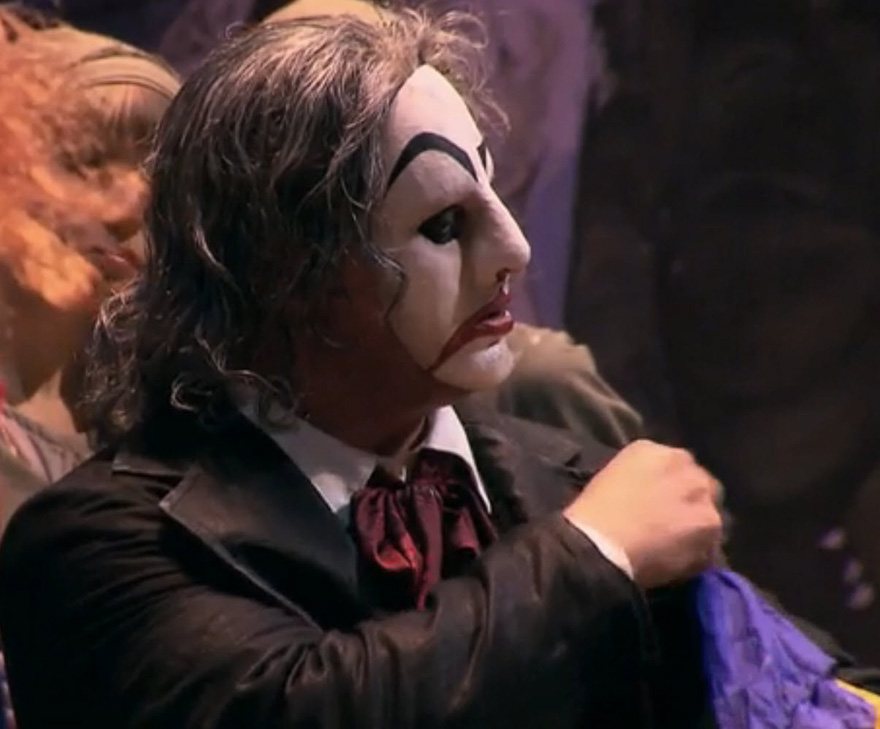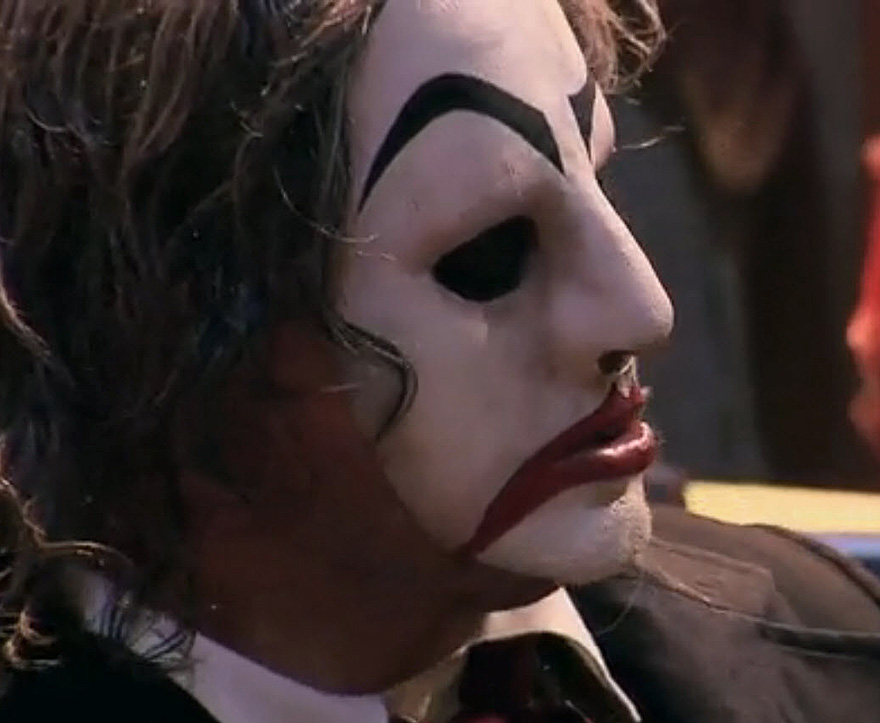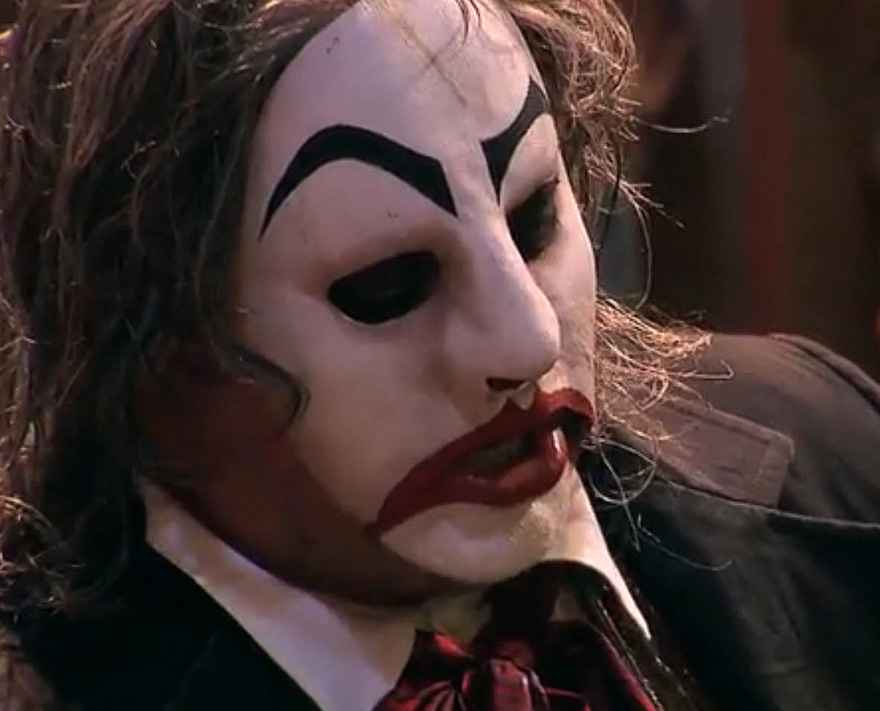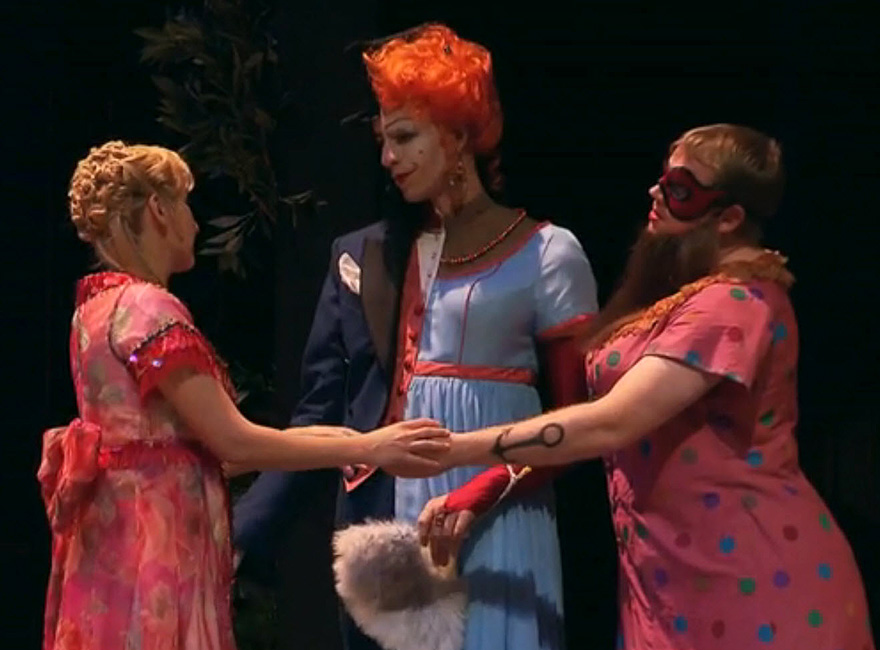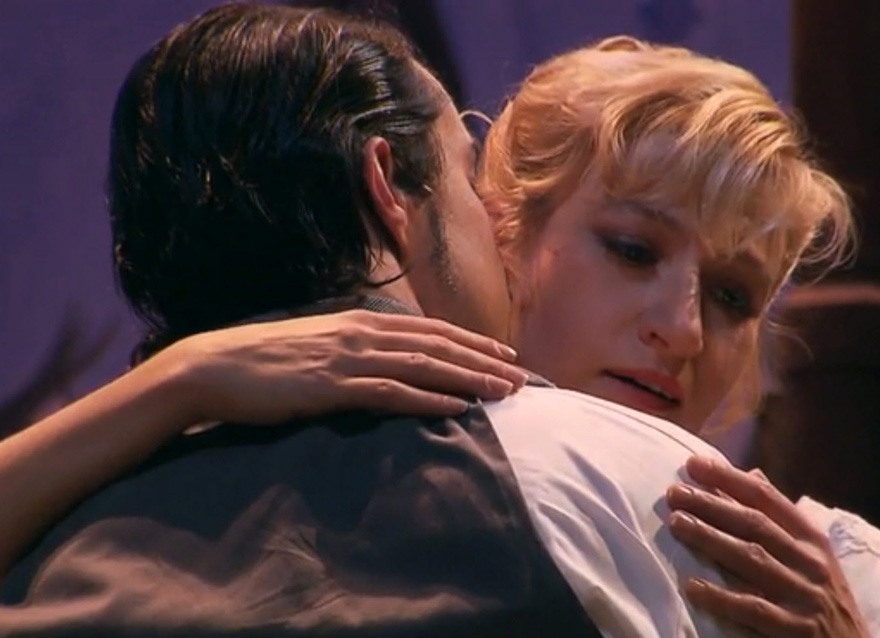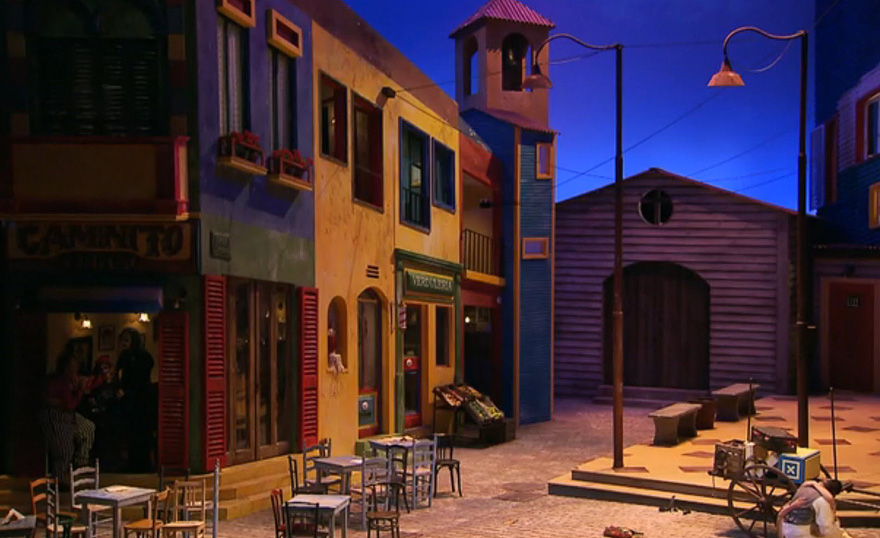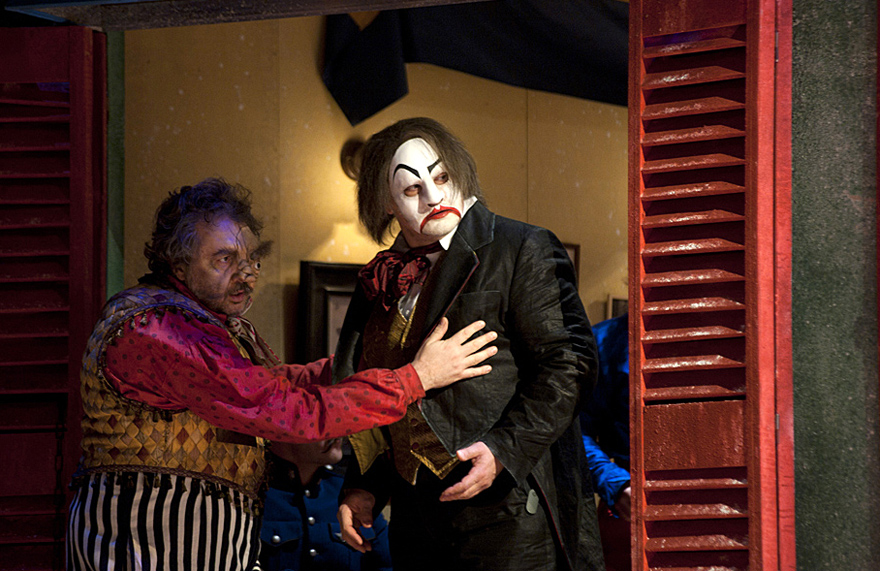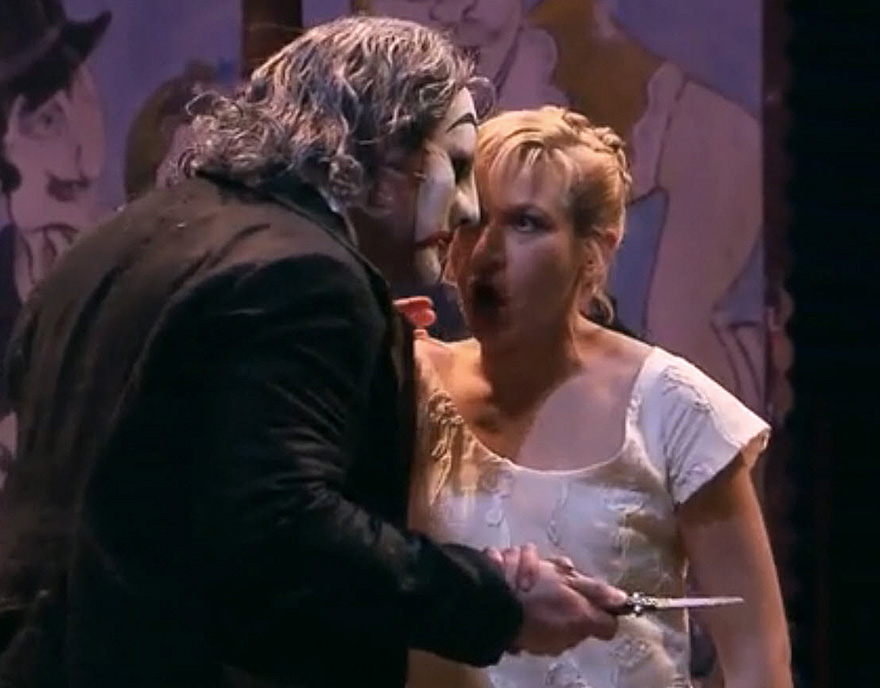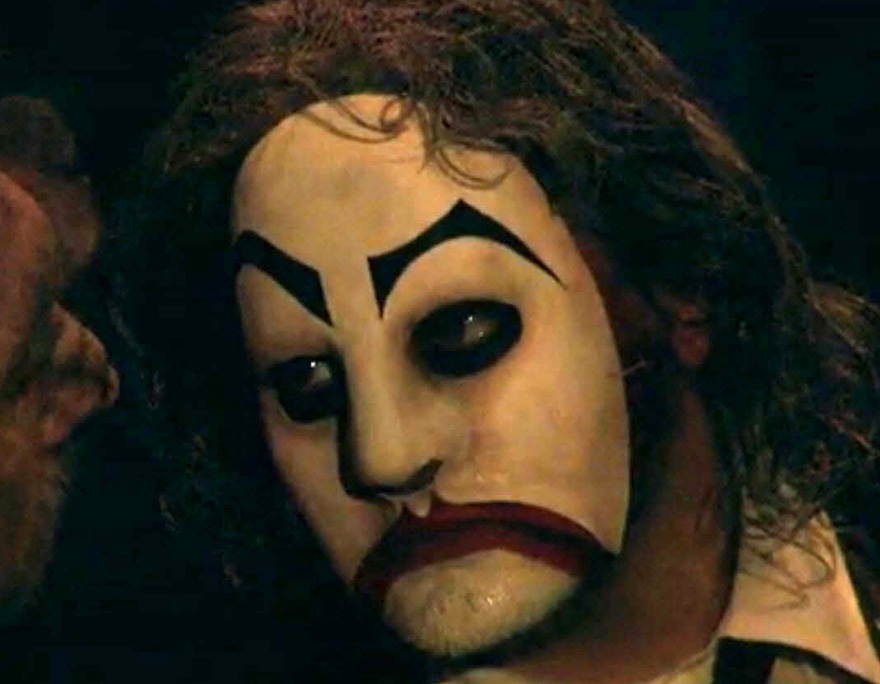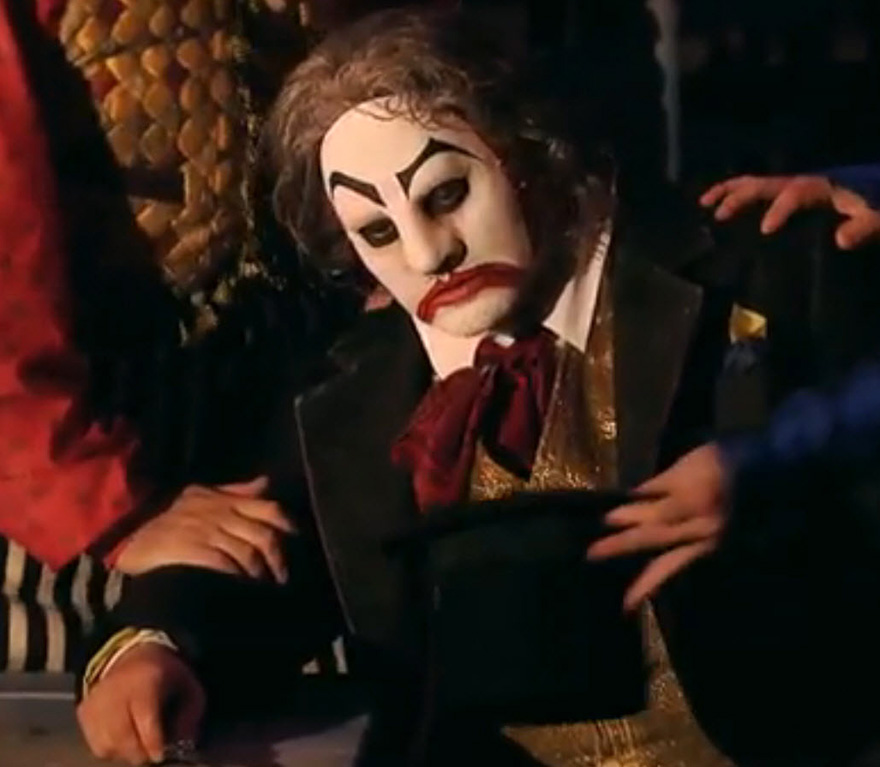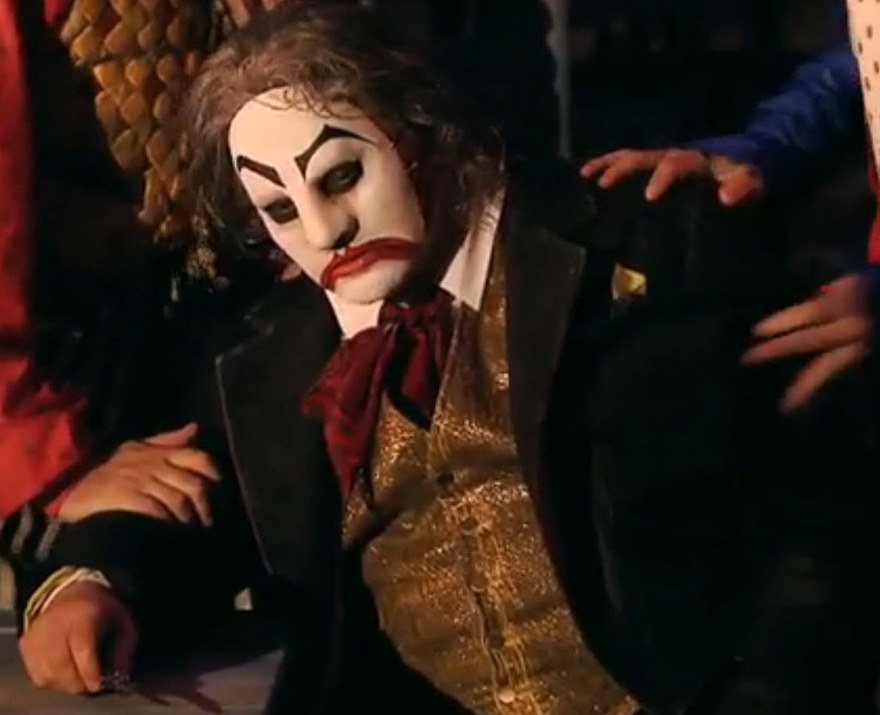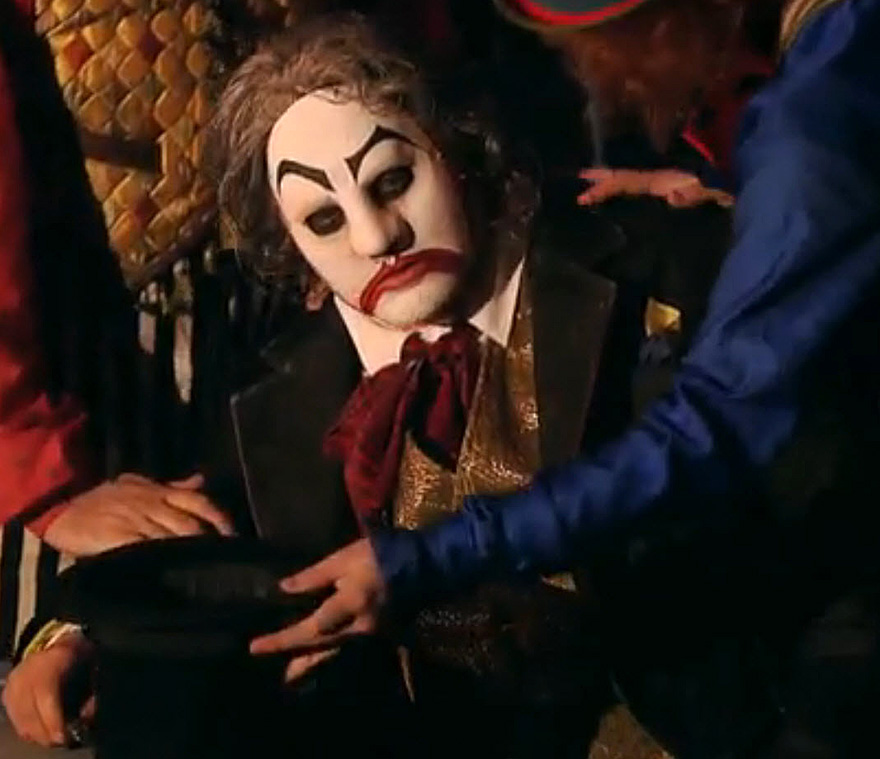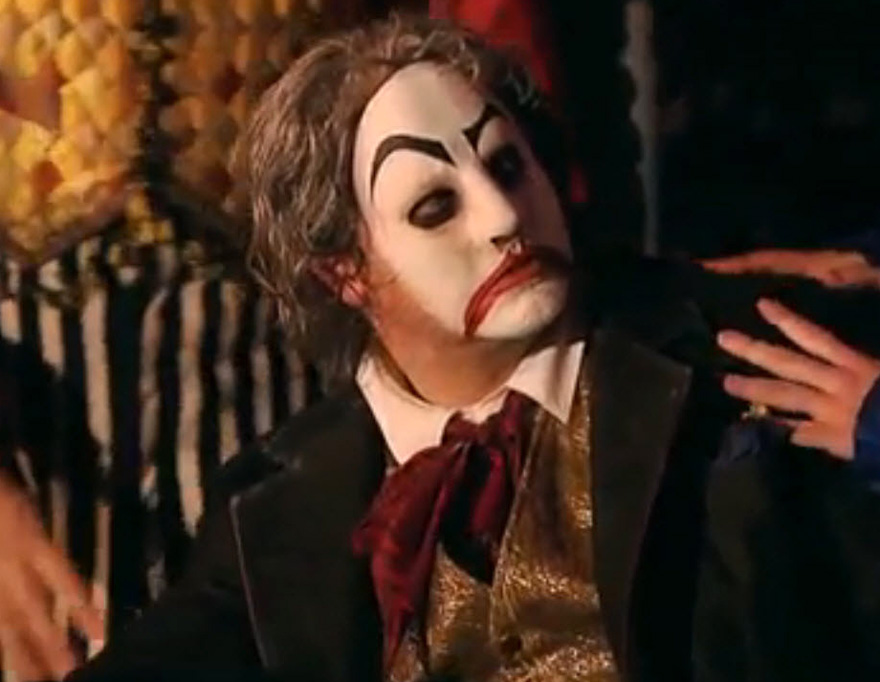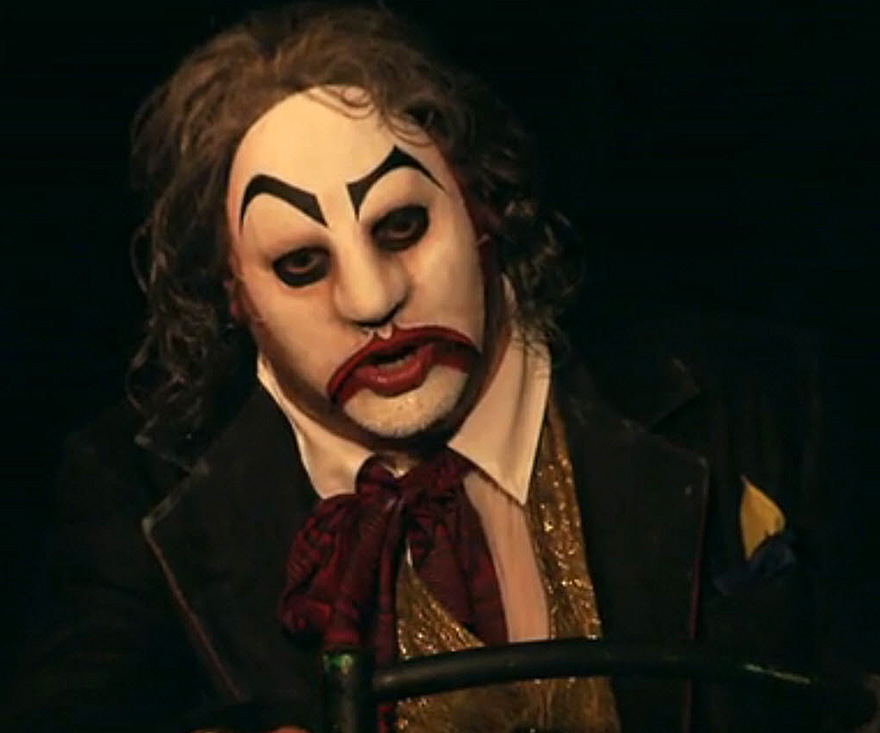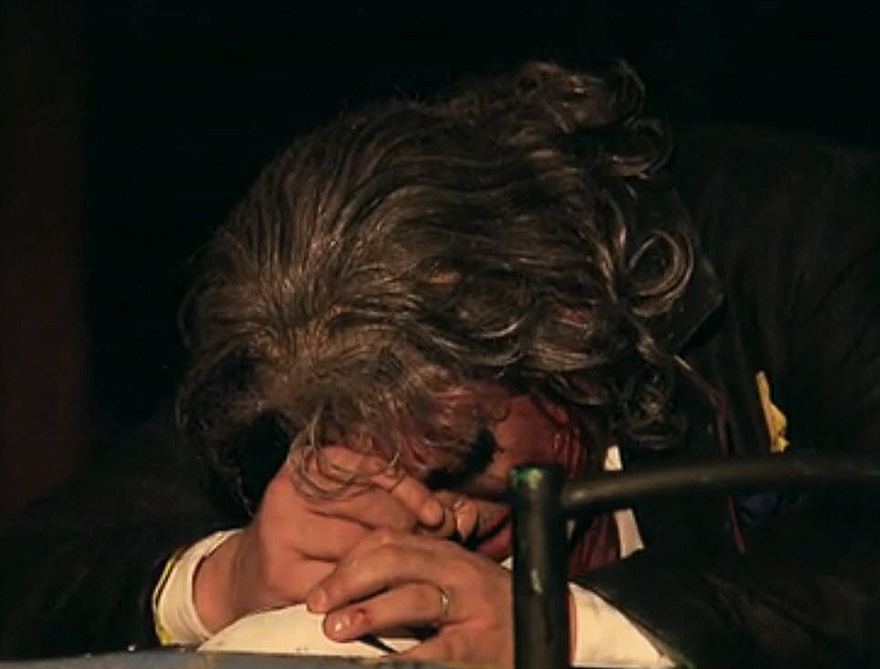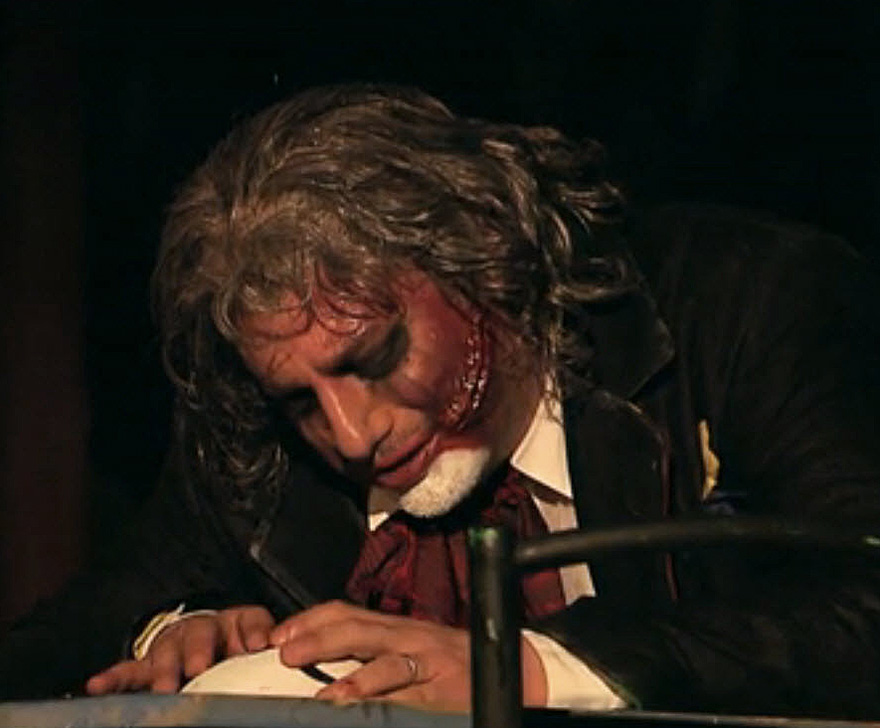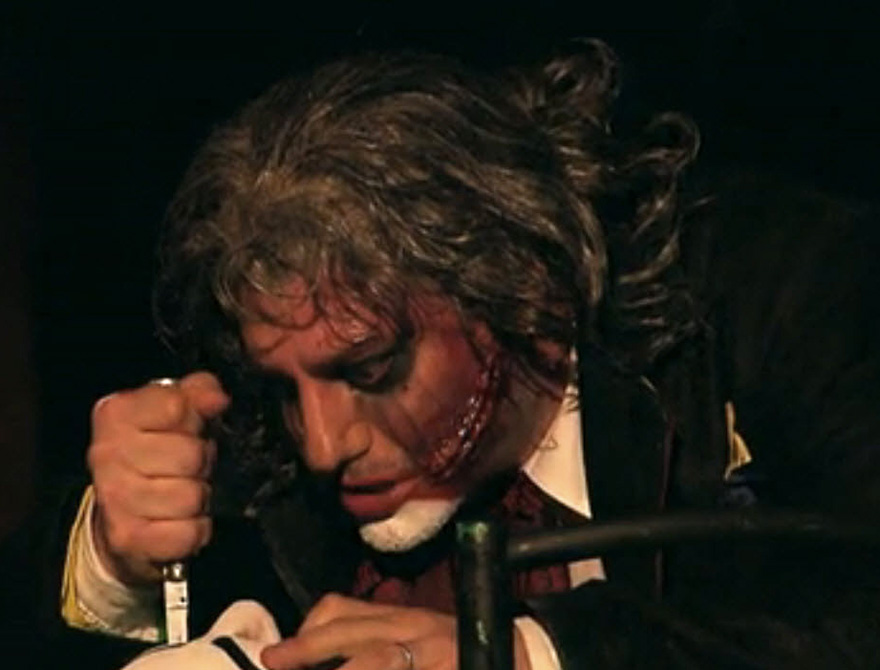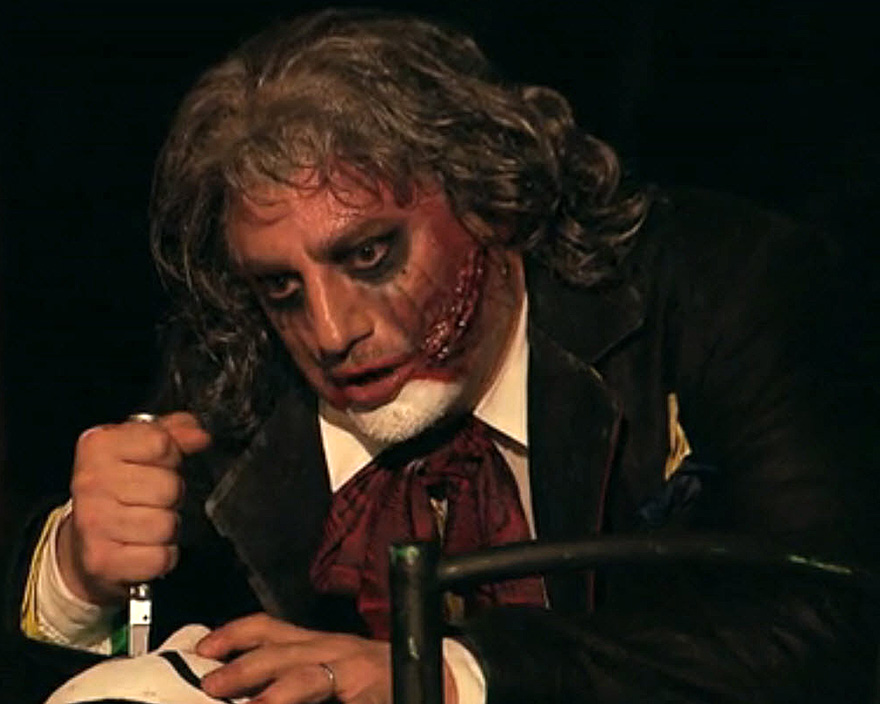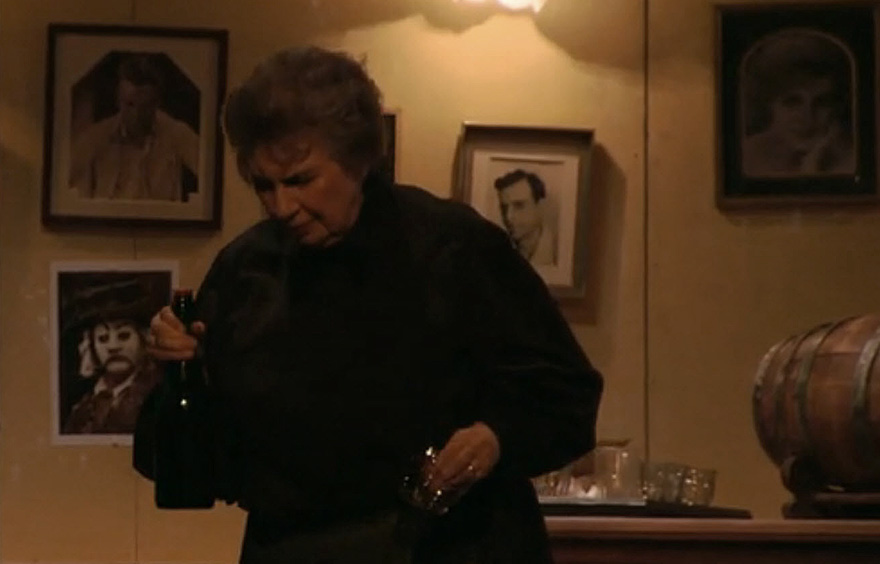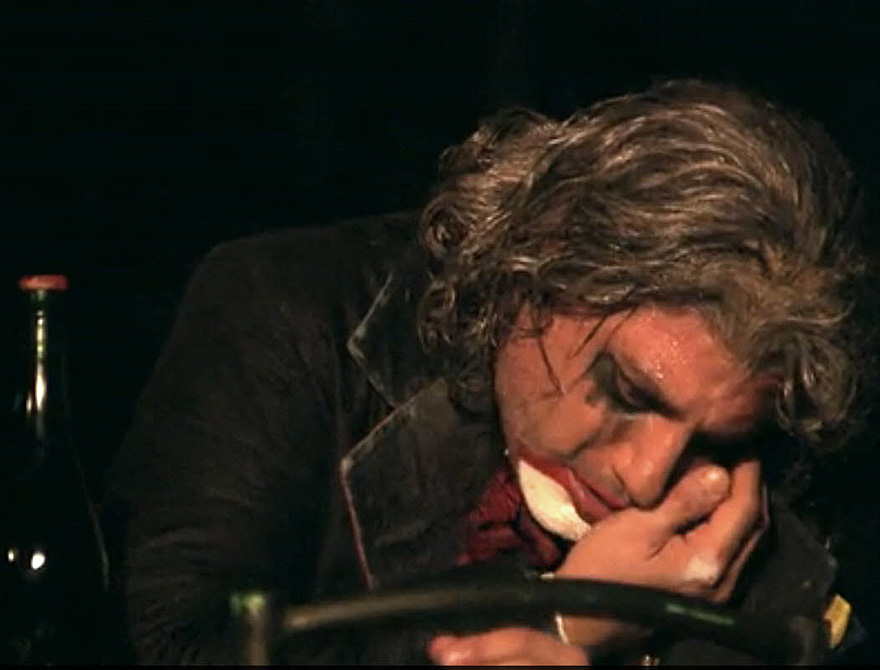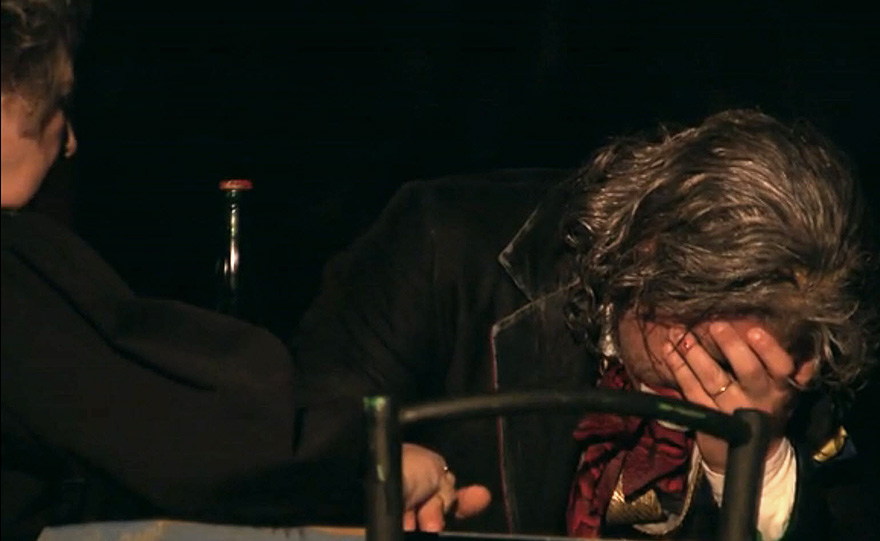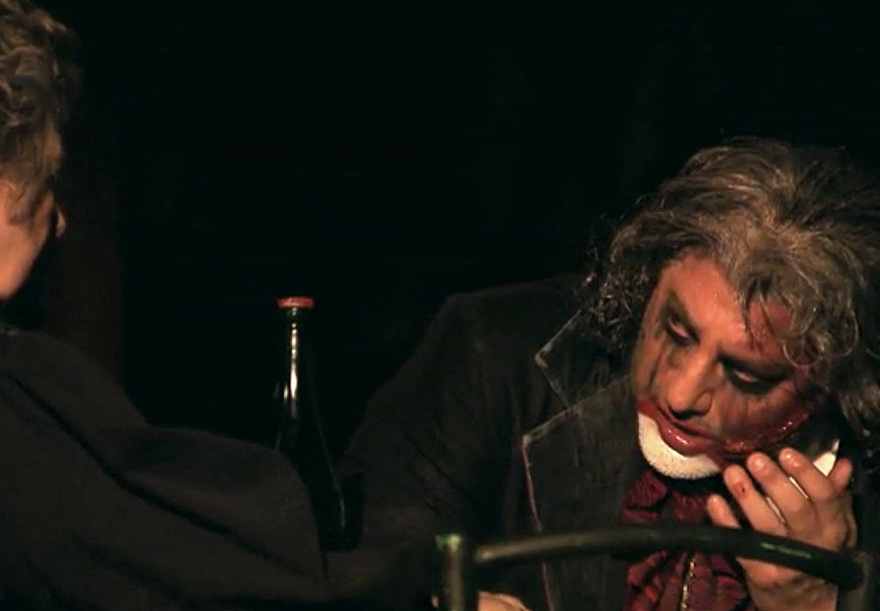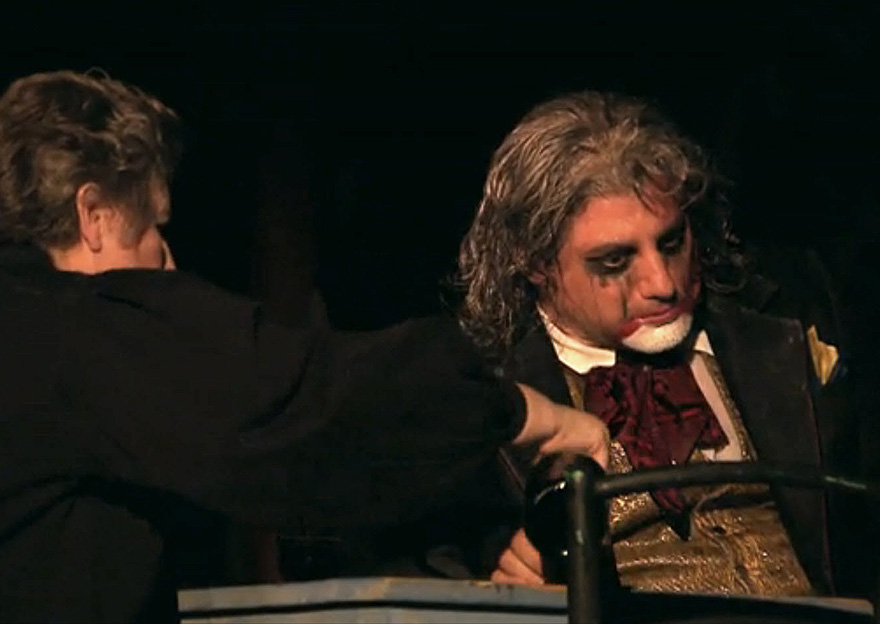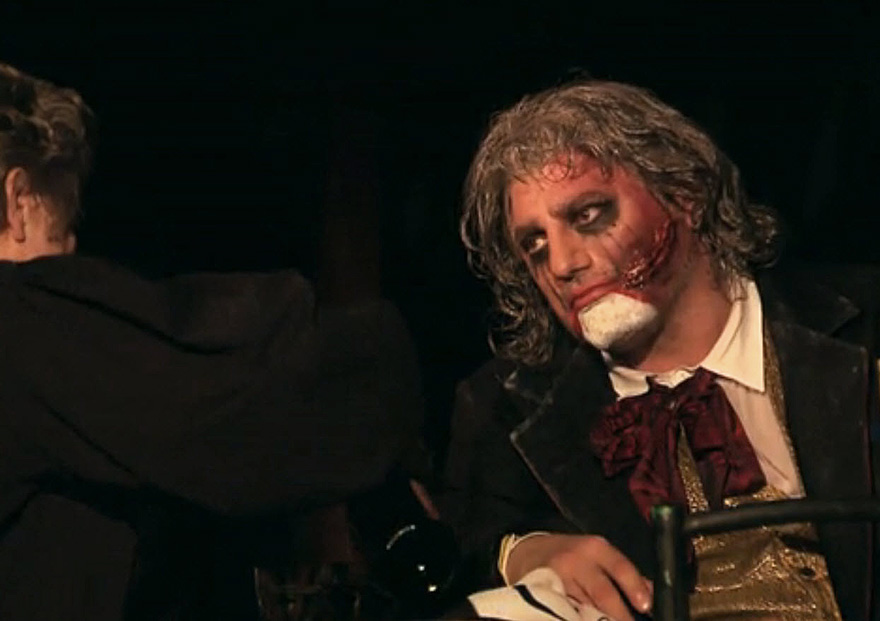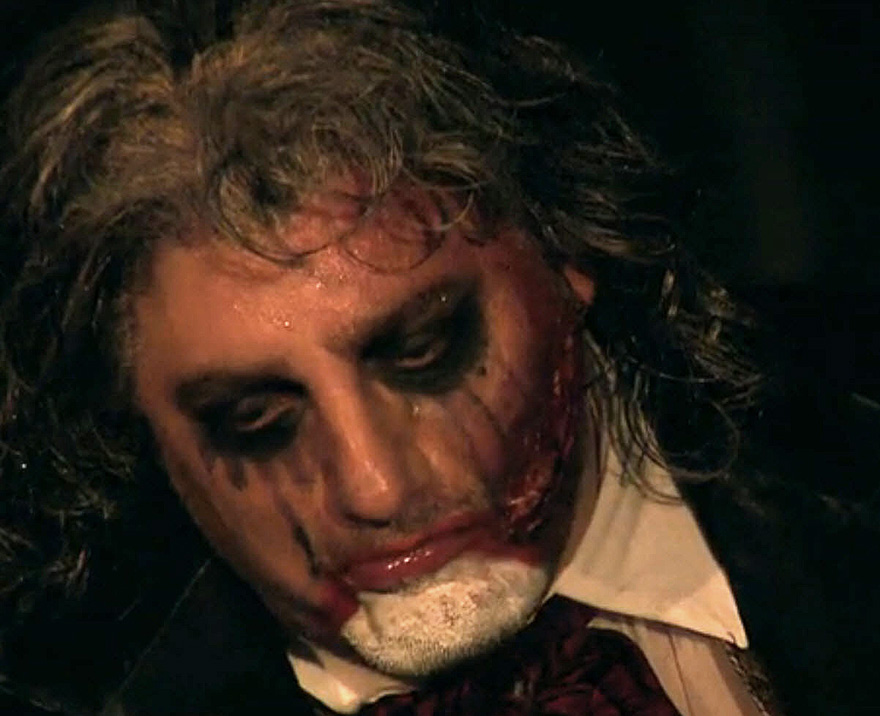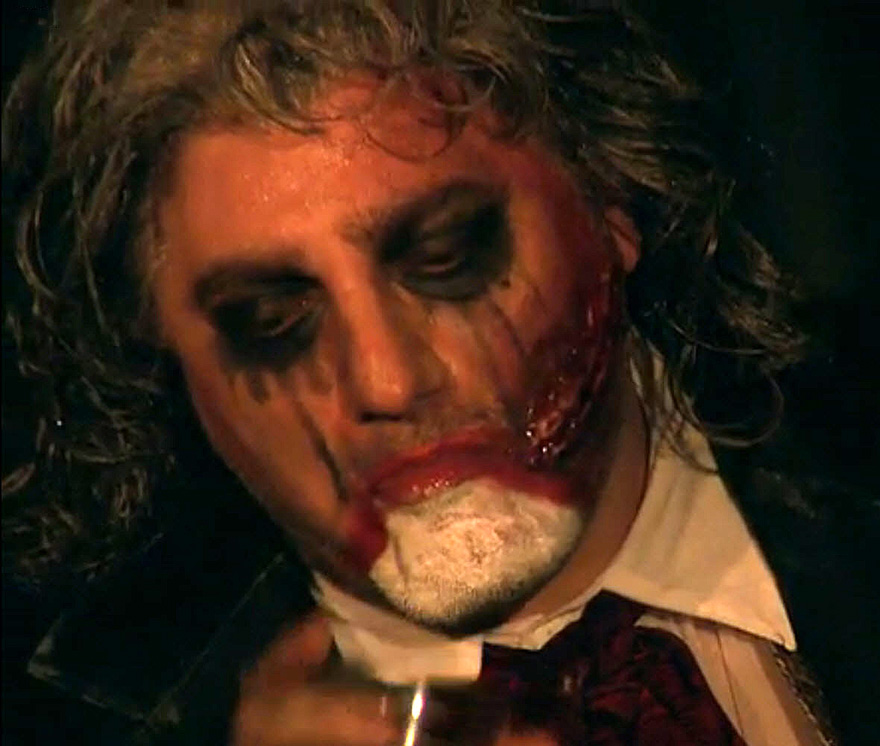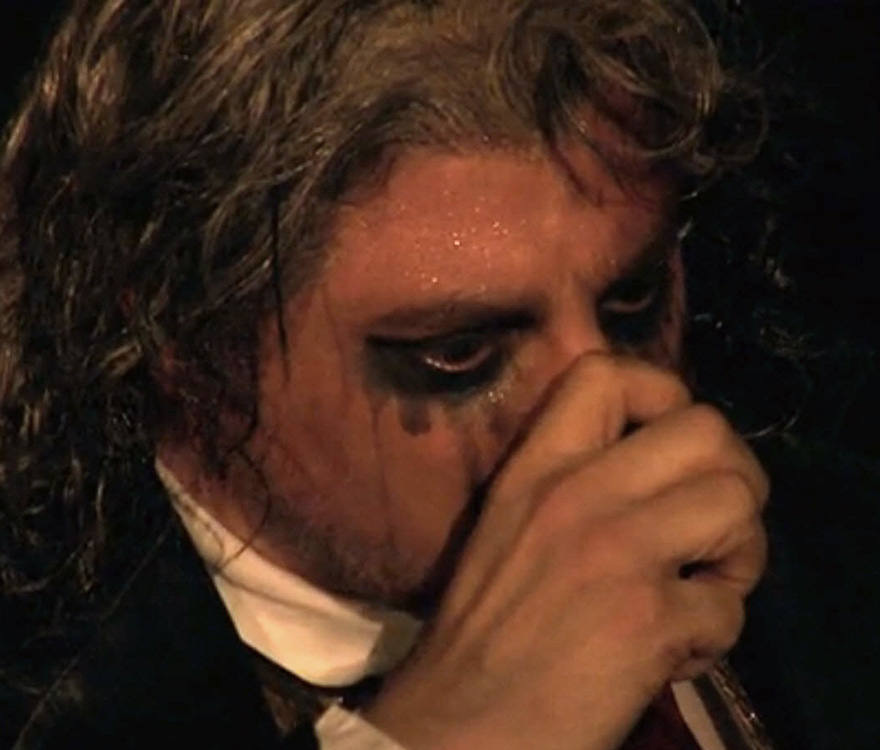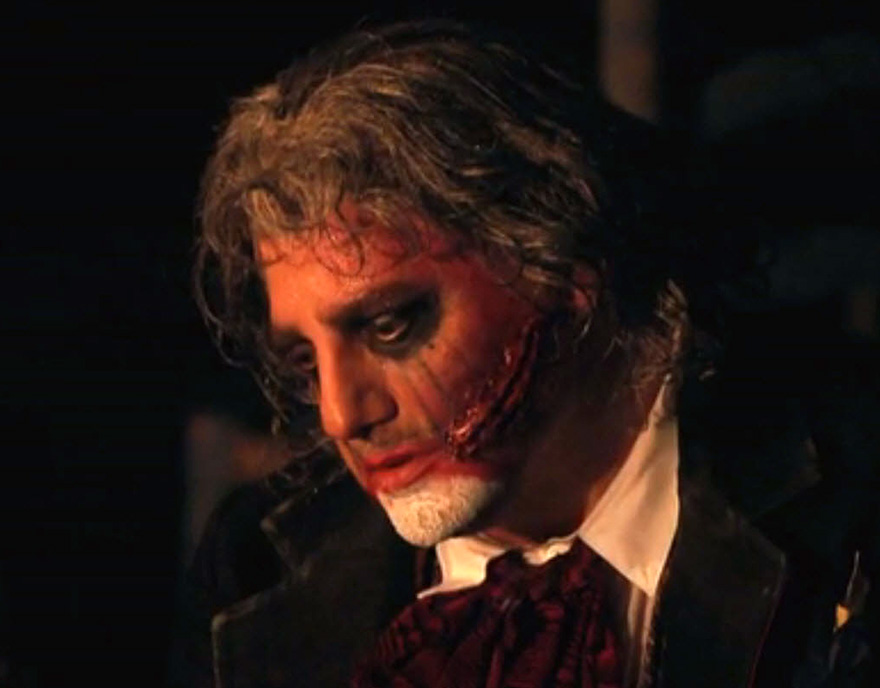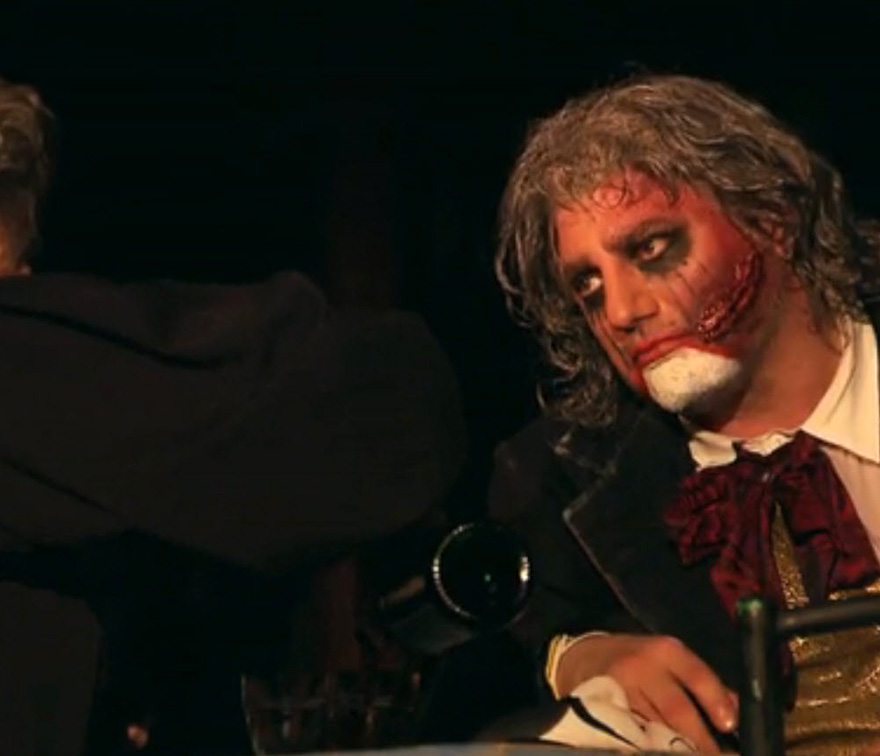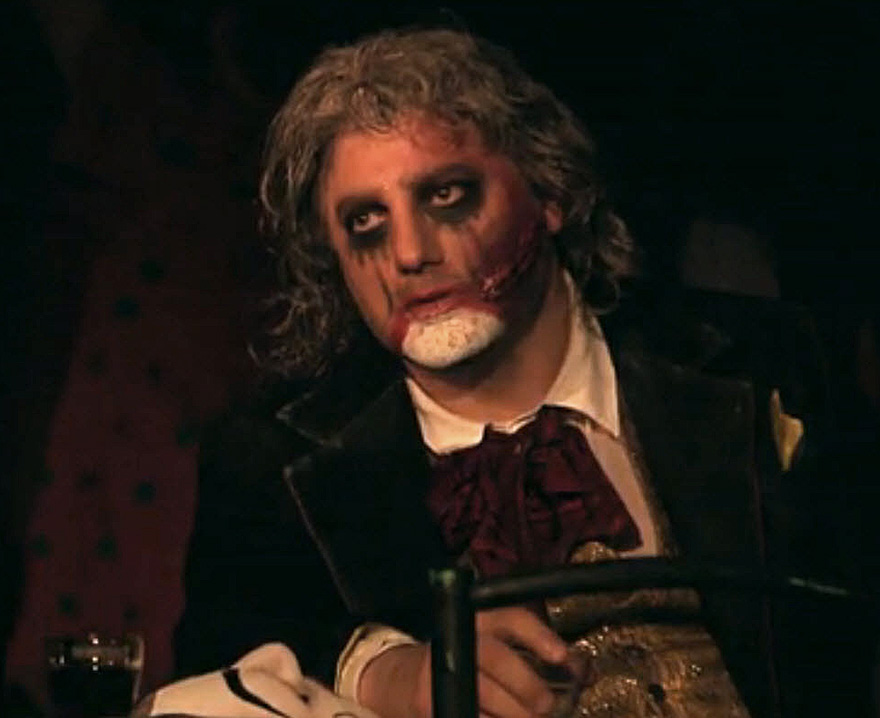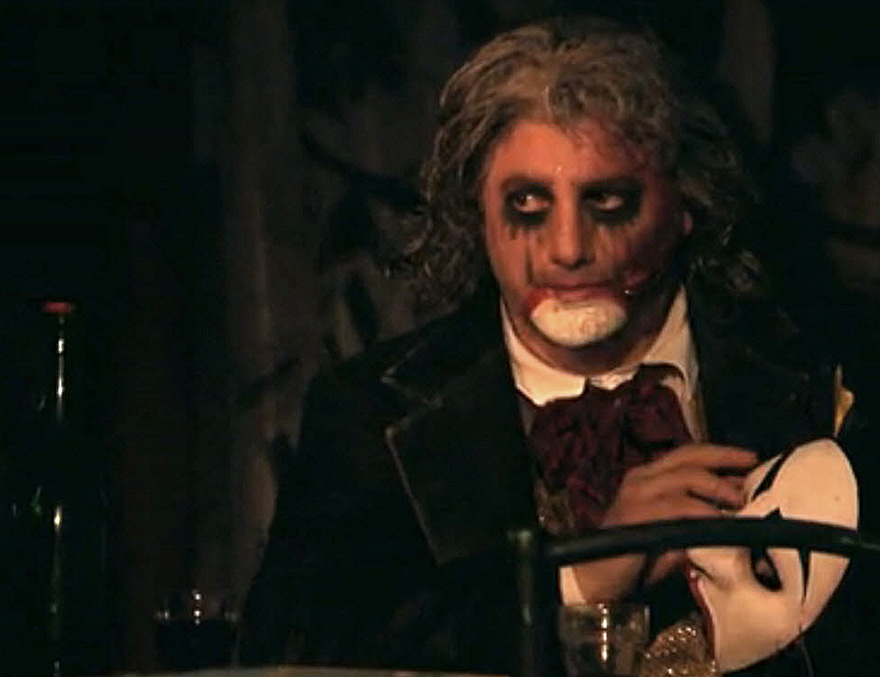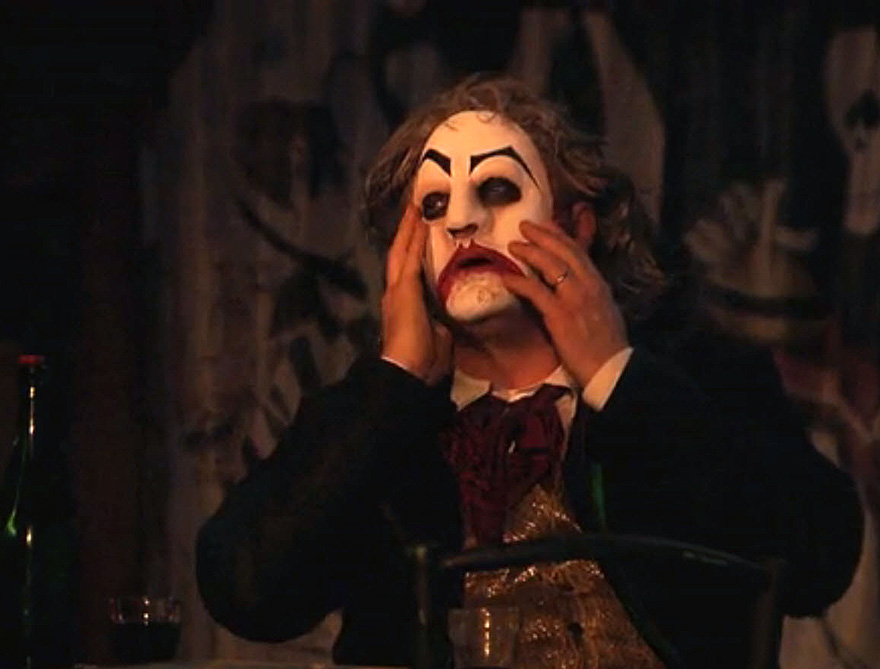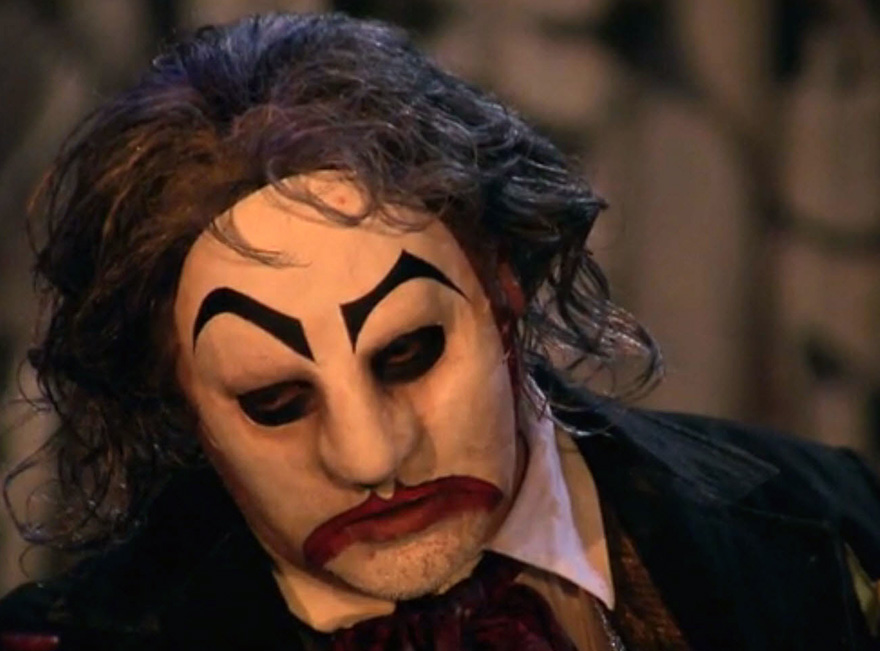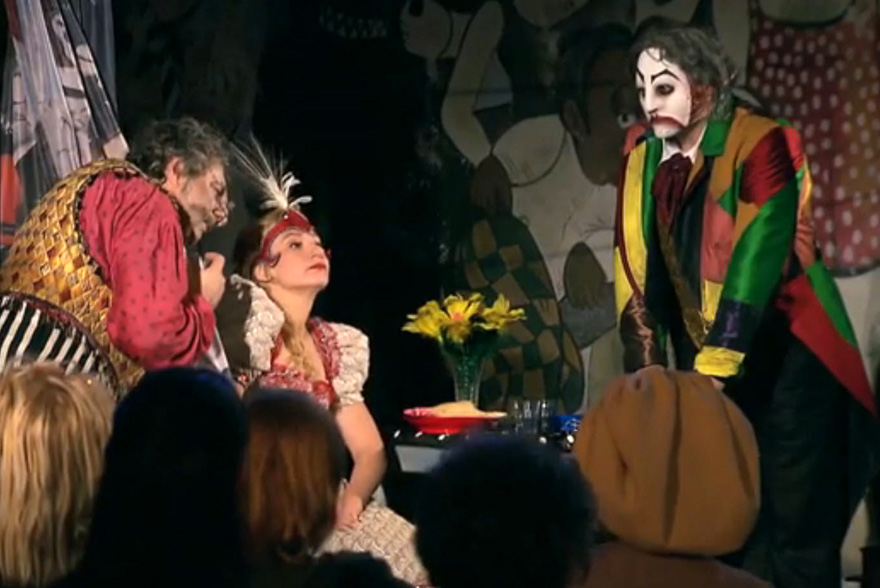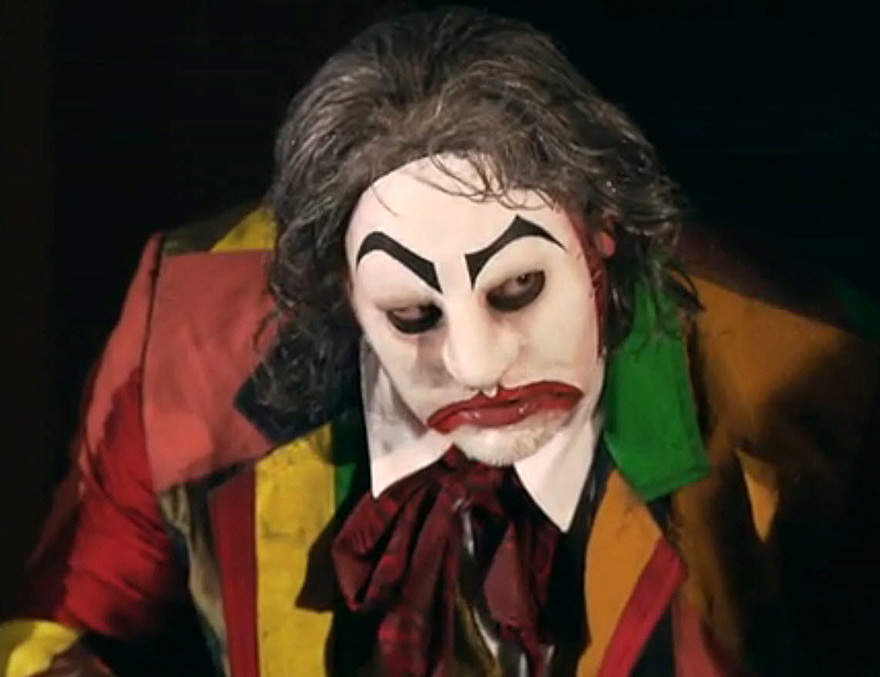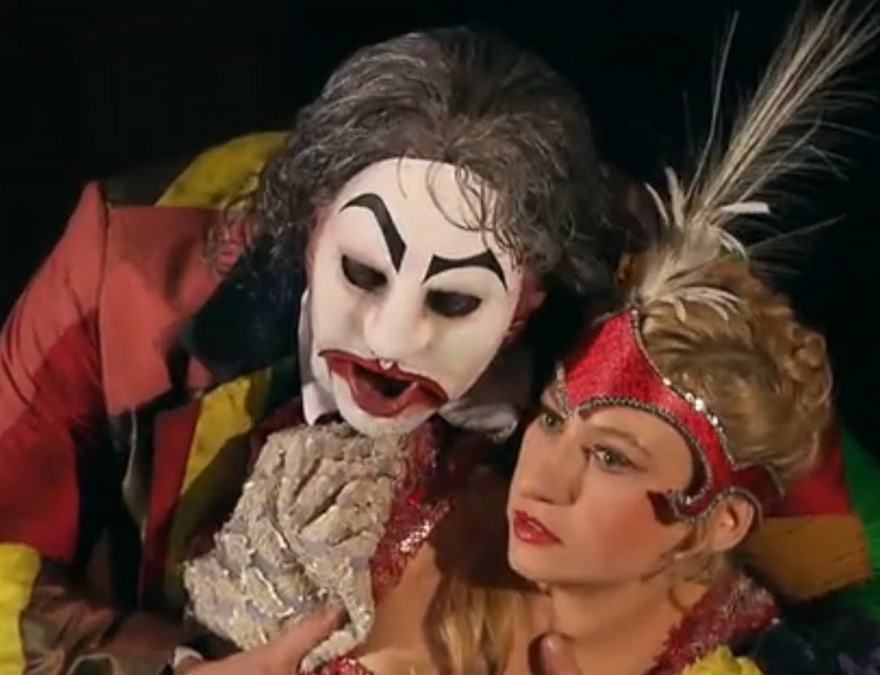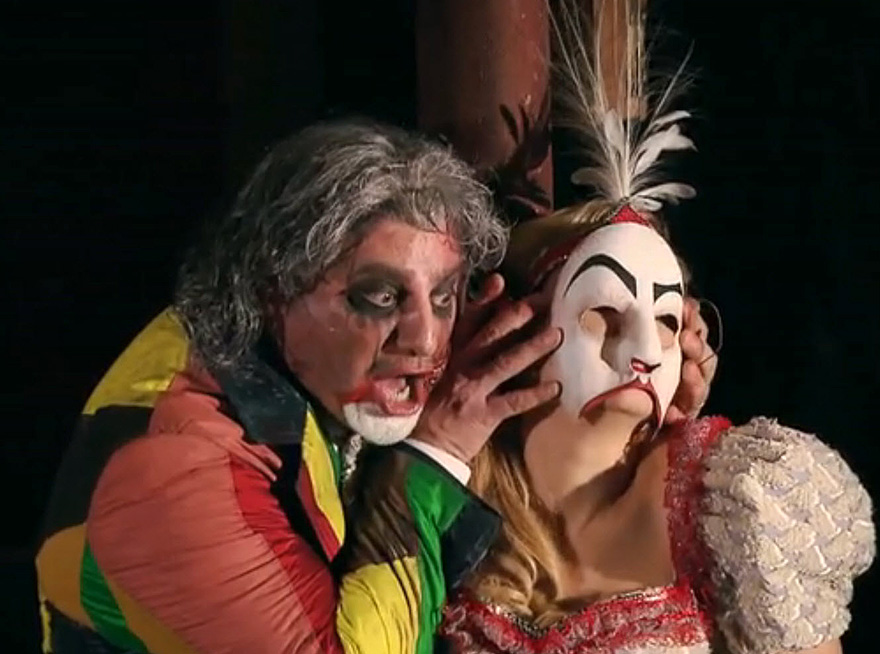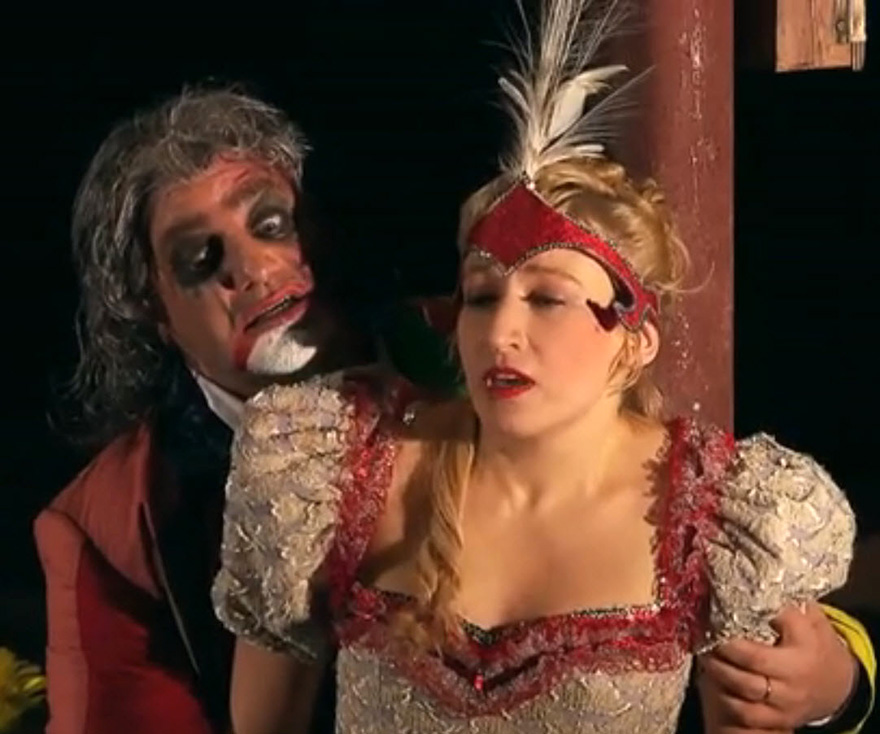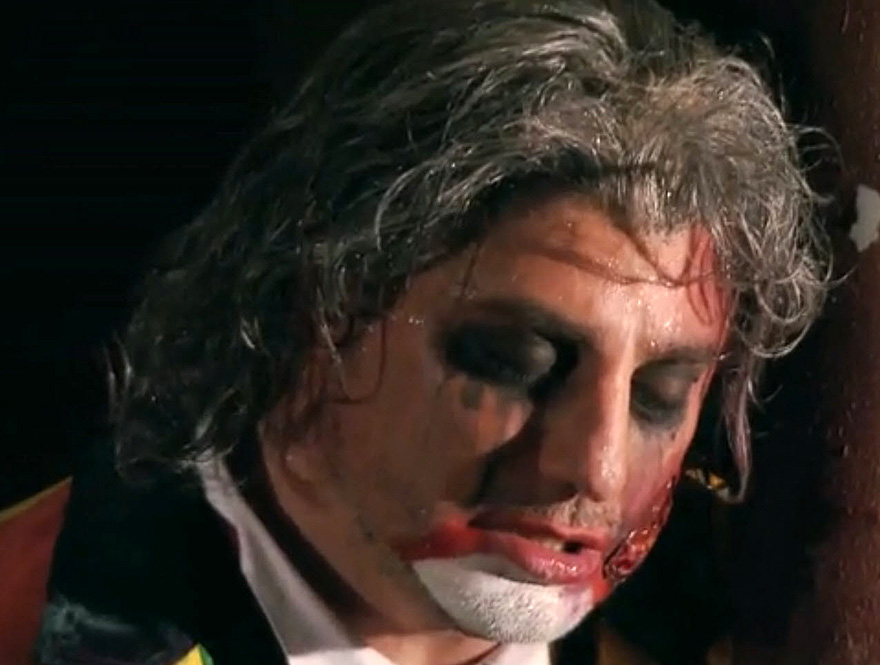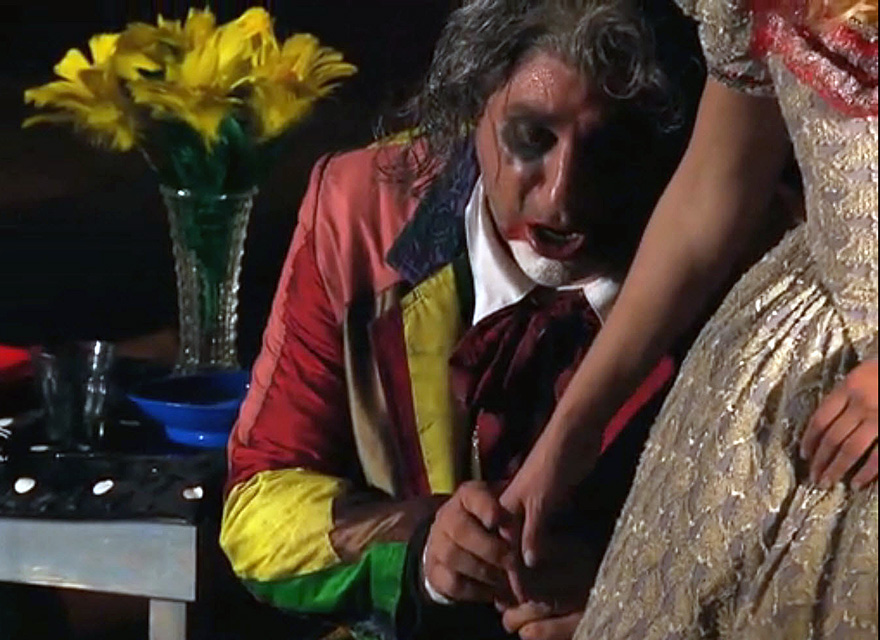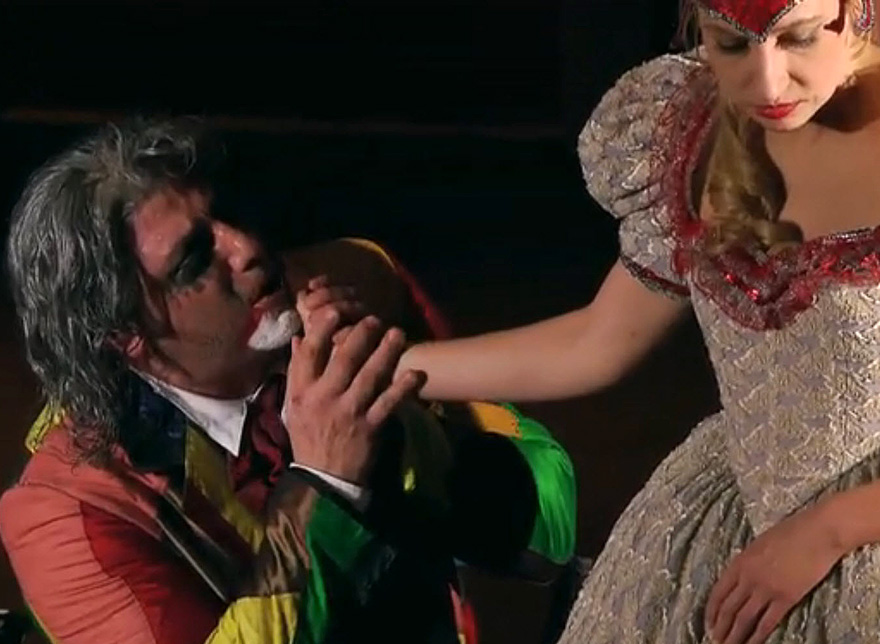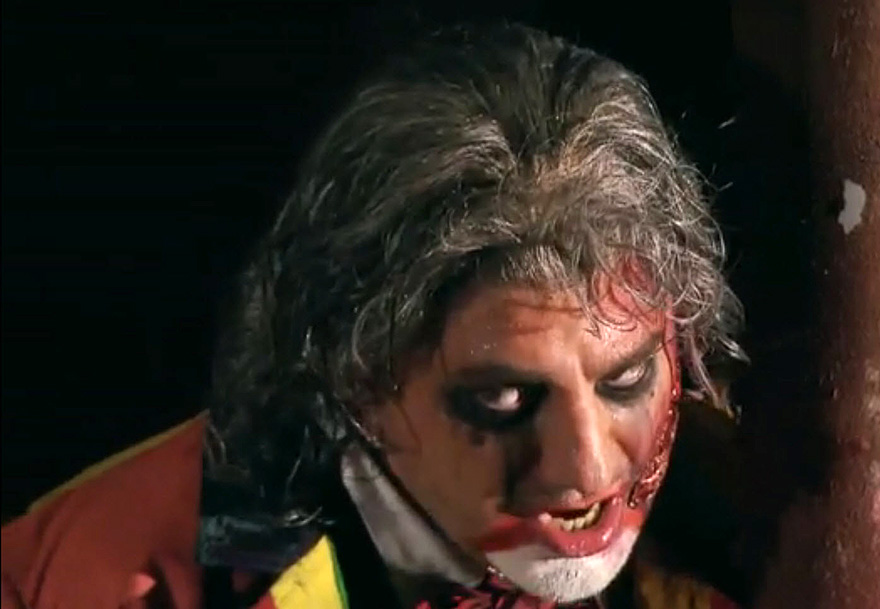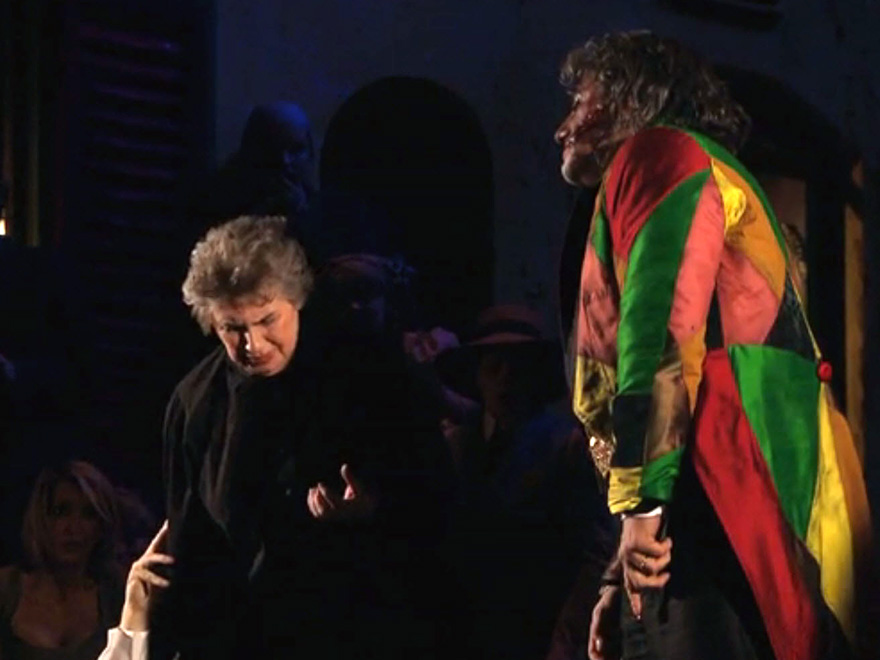Sights without sounds. The curtain rises as the secrets of
night prepare to give way to truths of day. These minutes
before the music begin offer director Cura a chance to
effortlessly establish the enjoined nature of both stories and
give hints of the double tragedies ahead: in silence the opera
in front of us is neither Cav nor Pag
but a promise of an extraordinary rethinking of both. Lola and
Turiddu, laughing and loving on the balcony above Mamma’s
cantina, look on approvingly as shy, uncertain Silvio and
unhappy, needy Nedda begin their romance. In due time Turiddu
leaves the balcony, reappearing below to catch the hat Lola
tosses to him; he hands Silvio the keys to the cantina before
disappearing into the background, a prophetic passing of
responsibilities and a locking together the fate of both men.
But Cura is not yet finished setting the stage. The
street-sweeper cleans the remnants of the past, the priest
emerges to nurture the town drunk, a couple appear to bicker in
a window—the stories of Santuzza and Turiddu and Silvio and
Nedda are just two of many threads in the tapestry of this town
and Cura is making an early and emphatic statement that his
staging is as much about community as it is about individuals.
The music swells as Pietro Mascagni arrives to observe, the
artist watching his story play out, powerless to stop it; the
composer will remain on set for the length of the opera.
The Siciliana is treated as more than a pastoral love song: it
is used to illuminate Lola’s dark nature. As Turiddu’s voice
rises, Lola moves to the window overlooking the town square,
reveling in her power over him. When Santuzza appears a few
windows down, pulled by the sound of the man she loves, Lola
delights in Santuzza’s frustration and pain; her hold on Turiddu
seems as much about ownership and sense of entitlement as it is
about love.
Cura takes the time to introduce the village during
Gli aranci olezzano sui verdi margini.
Silvio is the conscientious, obedient son to Mamma Lucia that
Turiddu can never be; the village people, preparing for the
Easter ceremony to come, are good-natured neighbors who give
coins to the town drunk and help reunite the quarreling
couple. And Mamma Lucia doesn’t pull away from Santuzza when the
young woman tries to tell her she has slept with Turiddu--her
heart is too big for that. Instead, their conversation is
interrupted by the arrival of Alfo and it is only with the
introduction of the teamster that a truly negative texture is
added to the otherwise happy town. As he boasts about his work
(Il cavallo scalpita), Lola is on her balcony blowing
kisses and making suggestive movements toward her husband--she
enjoys her dangerous game as much as her husband enjoys his
position in town.
The Easter hymn is simply and beautifully staged, with the
procession coming from the church to set the holy image inside a
niche in the wall—the love of God isn’t confined to the space
within a building even if the conventions of the Church work to
keep some outside. And when the crowd leaves Santuzza to enter
that structure, the town drunk, also unable to enter the church,
attempts to reach out to the living spirit he finds within the
woman.
Turiddu and Santuzza are not alone during their initial
confrontation: Lola watches from her apartment, increasingly
concerned that Santuzza’s pleas might move the honorable
Turiddu. She hurries downstairs to remind Turiddu of what he
risks losing and after having re-establishing ownership, she
heads into church—though not before pulling a number of bills
from her purse, waving them in the air and then throwing them
into the outstretched hat of the drunk that until then had
captured only coins. Lola isn’t about to let anyone forget her
wealth, her status, and her entitlement.
Once Turiddu follows Lola into the church, Santuzza is once more
supported by the drunk, who offers the one thing he holds
valuable, his wine bottle. This time she takes it and drinks
long. When Alfio returns and with her self control momentarily
lost, she tells him his wife has been unfaithful. Alfio's rage
scares her but she tries to calm him. Unable to undo what she
has done, Santuzza runs off.
The Intermezzo takes on additional impact when
Cura stages a reenactment of the opening scene, with ‘Turiddu’
coming once more from ‘Lola’s’ apartment, but this time the
action in mimed through dance, a tango choreographed to Cura’s
design. Beautiful in its sensual lines, touching in its simple
emotion, deadly in ‘Lola’s’ final, fatal thrust, the Intermezzo
compresses the opera into a few haunting moments of revelation.
The denouncement comes quickly: Alfio and Turiddu confront each
other, Turiddu bids a tearful farewell to his mother, relying on
her good heart to embrace Santuzza as the daughter she would
have had were he a better son, and runs off to be killed. The
community comes together in their grief. Mascagni mourns.
And yet….the opera doesn’t end, any more than the town
disappears or the people cease to exist. For Cura, life
continues without break and the death of Turiddu was just one
tragic event in a cycle. Life goes on. And so as the stage
lights dim and night comes upon the town, a
bandoneón player takes his place on stage to connect the two
operas, to reinforce the continuity of all things.
Take-away:
The set design was a brilliant fusion of old and new world that
allowed Cura to mix elements from both to create a wonderful
dynamic. He invested time and effort with the chorus and the
supernumeraries to create a living, breathing environment in
which to insert his stories. He brilliantly choreographed the
action, bringing the drama front and center but never forgetting
to fill the interstices with the real sense of life—there was
never a moment without activity, without purpose. It was a
breathtaking suspension that was so compelling the audience was
loathed to leave the auditorium during the intermission (during
which the bandoneón player continued to play).
The addition of Mascagni to oversee the opera seemed at first a
risk but was ultimate a successful conceit: the composer was
every one of us in the audience, aware of the trajectory of the
story but unable to stop the inevitable. He channeled our
emotions in silence, his expression mirroring our feelings.
The early introduction of Silvio (and Nedda) gave the character
a much needed history, adding an overall pathos to Pag. His
quiet, conservative, dedicated approach to work, his attention
and devotion to Mamma Lucia before Turiddu’s death and
afterwards, make us care for this young man and ultimately adds
even greater pain to the ending.
The actor who played the drunk deserves special mention (as does
Cura for including him); the outcast accepted by the townspeople
in turn became the protector of the outcast who has not yet been
embraced. This unexpected performance added a layer of
continuity and compassion to an opera that can sometimes suffer
from flatness.
The tango ballet: bravo! What a brilliant, original use of
time and space in the opera! If only other directors would be
as inventive and allow them to think outside the proverbial box!
The performance from the principles: In spite of persistent
illness among the cast, the intensity of the leads, the
attention to detail, and the delivery of the music remained at
the highest quality.
Director Cura: his care and concern and compassion and
understanding of this work were evidence from the opening
moments. His attention to detail was outstanding. His
placement of character, his balance between action and inaction,
his inclusion of nuance that added the necessary depth this
opera needed was remarkable. His innovation was never
introduced without purpose. This staging is one that should
travel, and there are a lot of well-established, highly
successful directors who could learn much in examining the work
Cura has done in Liege. I’m already looking forward to the
next….
.jpg)
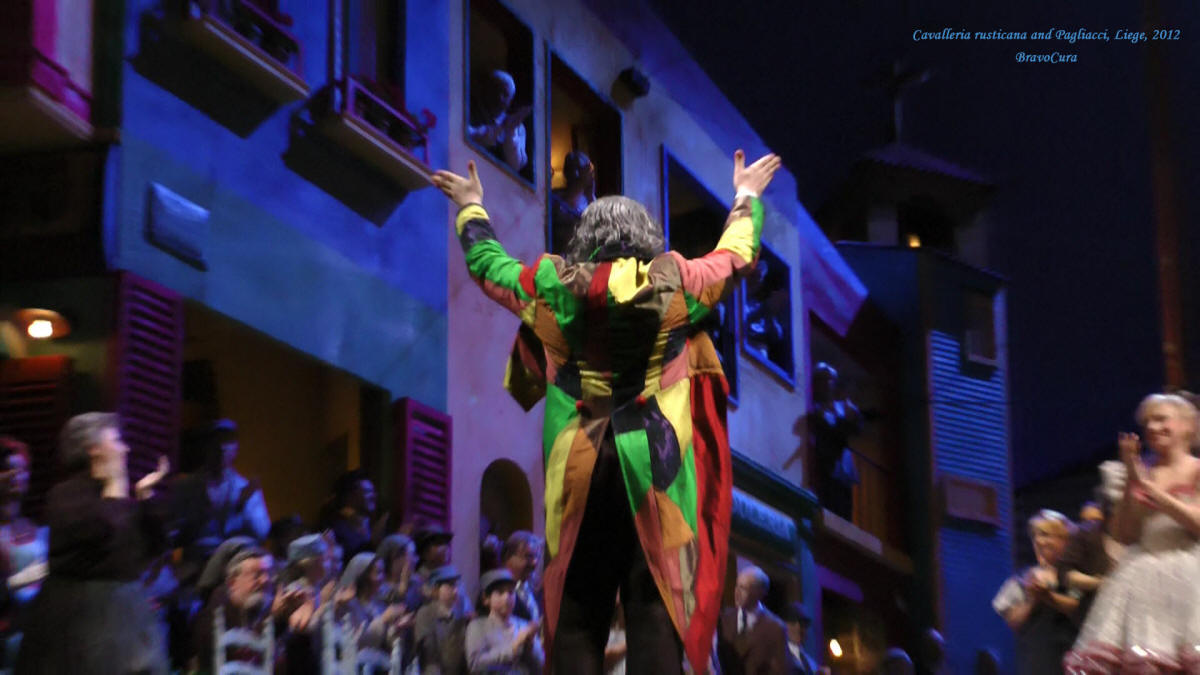
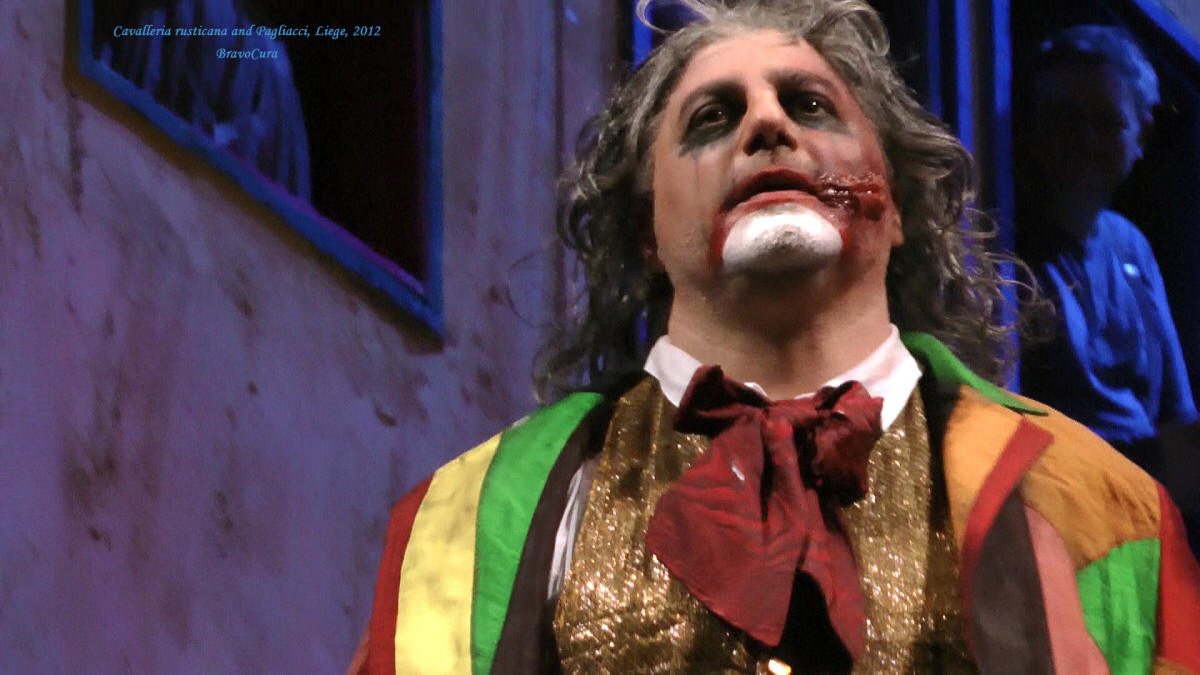
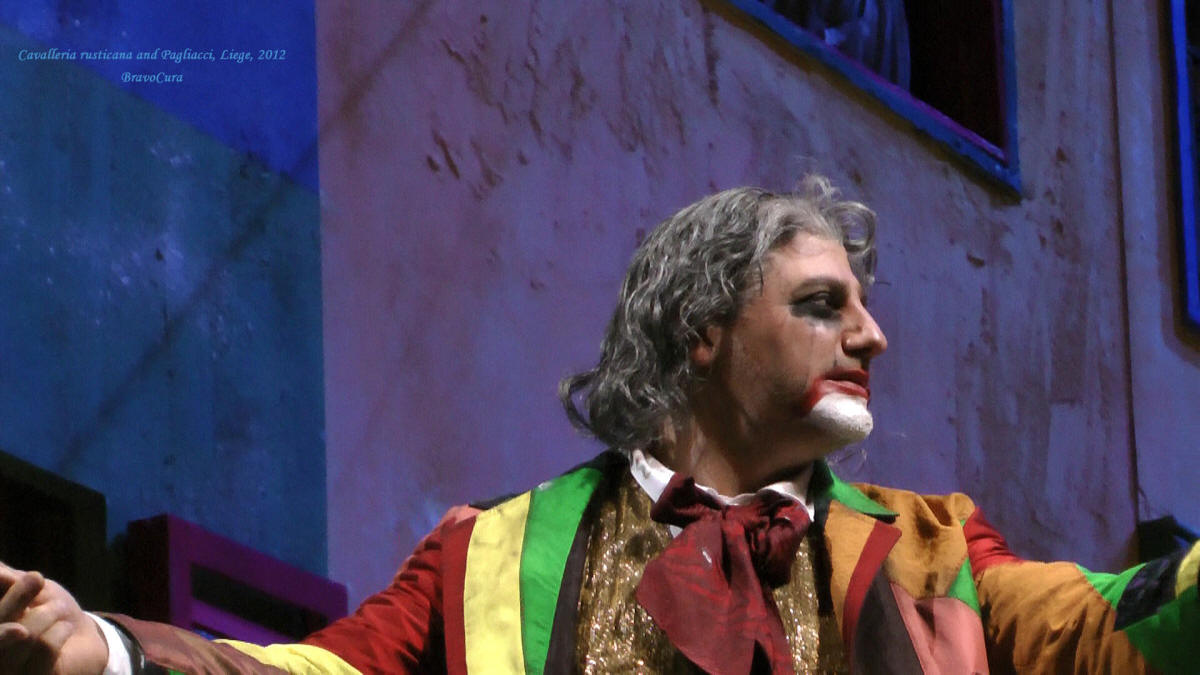
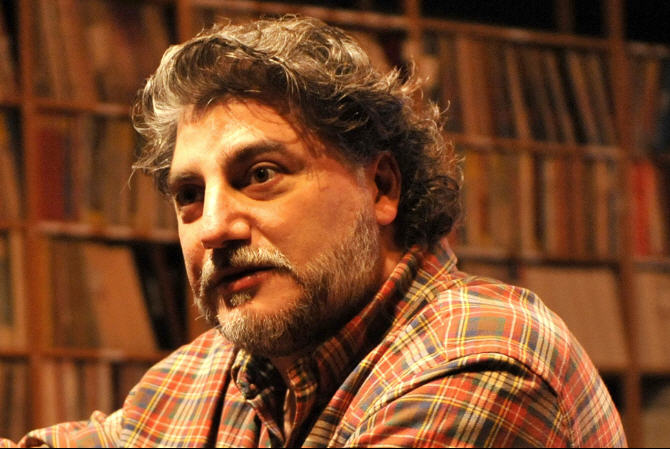
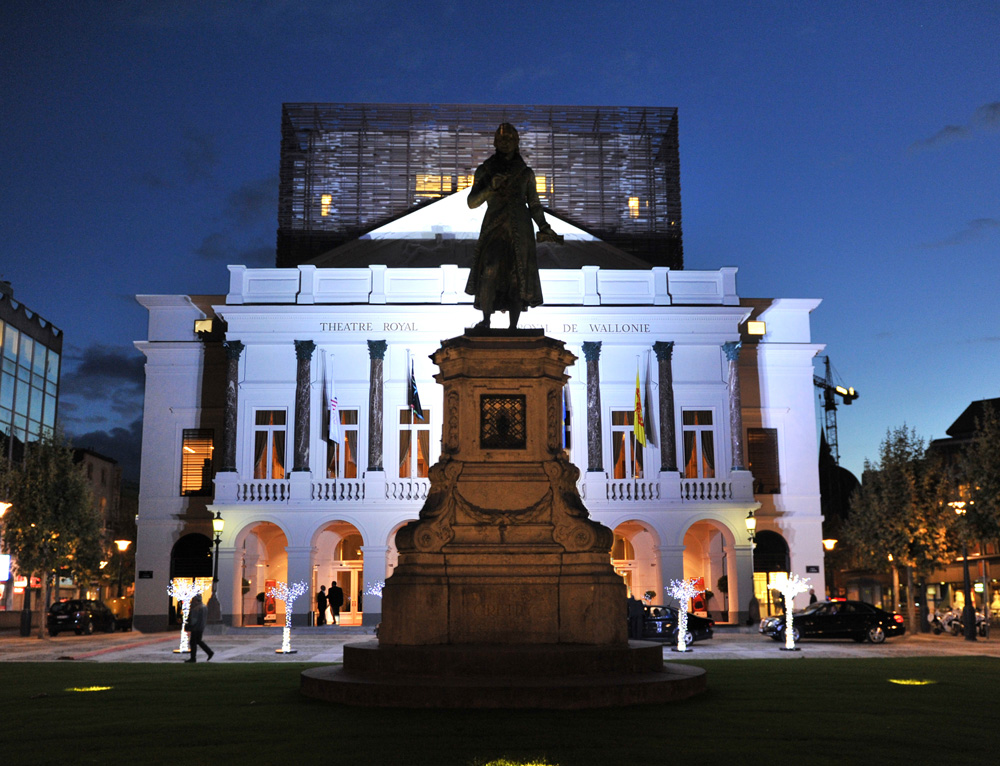
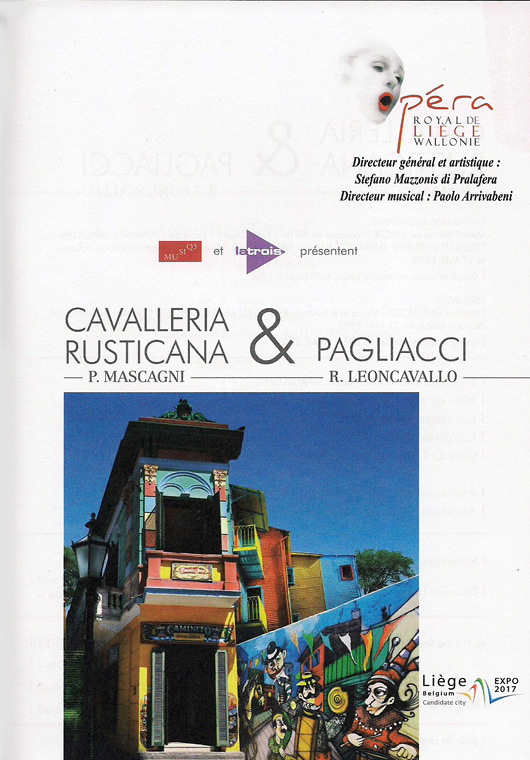
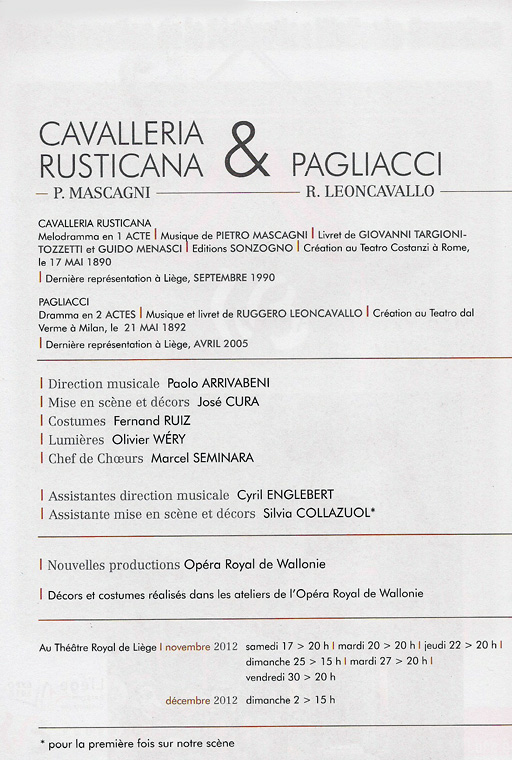
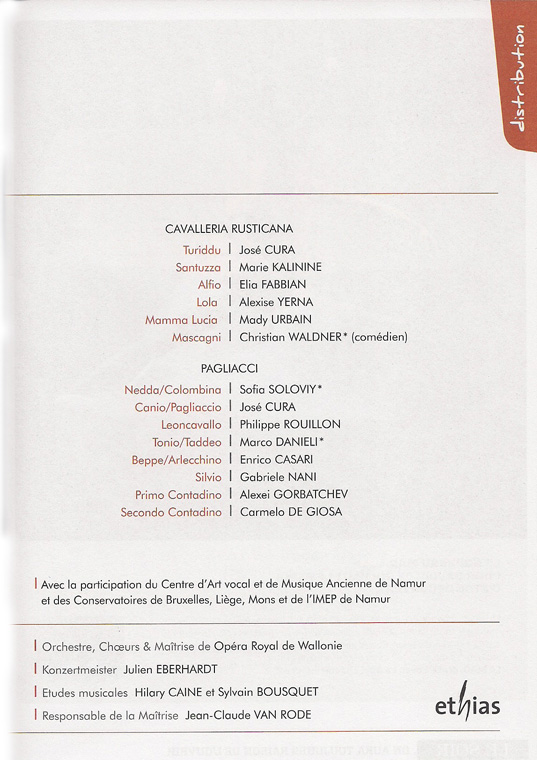
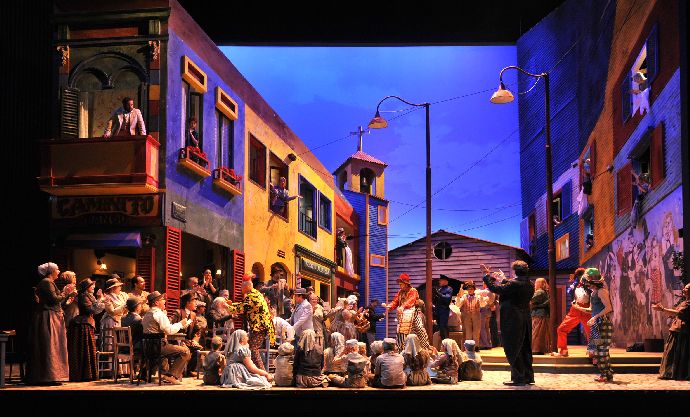
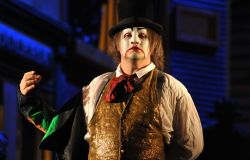
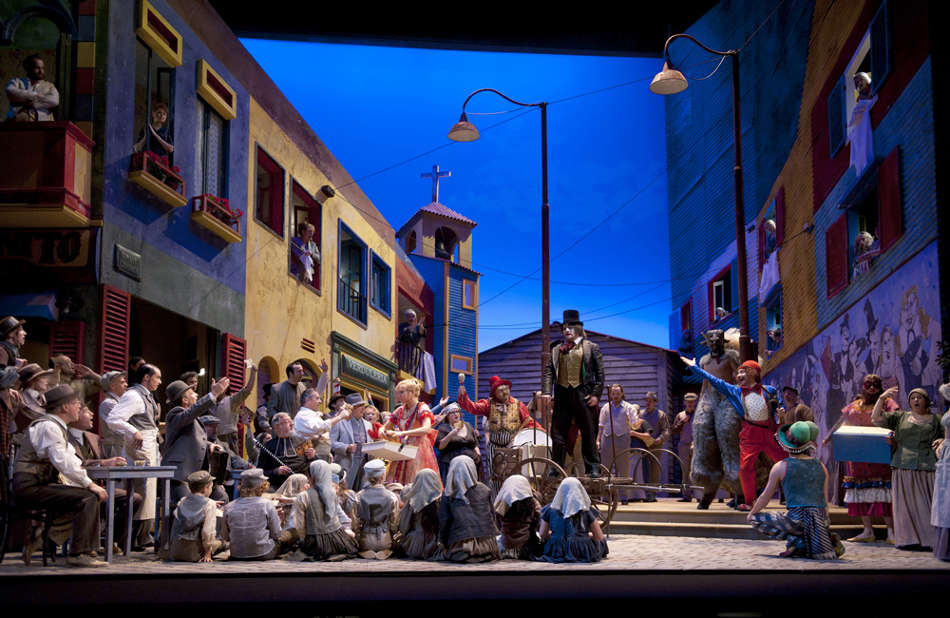
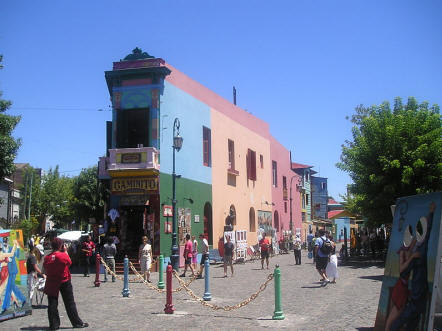 Though
we begin with Cavalleria rusticana, Cura’s staging of
this independent opera becomes so intertwined with its companion
Pagliacci that it in fact becomes the first act of an
extended, integrated tragedy. Both operas take place in the
same location, innovatively reset to the Caminito in the La Boca
barrio of Buenos Aires, an area noted for its Italian heritage
but with the vibrancy of the new world; the setting allows Cura
to pay homage to his homeland in the use of vivid colors
(including those found in the Argentine flag) and the
incorporation of uniquely Argentine elements like the tango. The
splendid isolation of the Italian community clinging to homeland
traditions in the middle of a ‘foreign’ land underscores the
‘rustic gentleman’ solution of Cav and adds poignancy to the
love story between Silvio and Nedda.
Though
we begin with Cavalleria rusticana, Cura’s staging of
this independent opera becomes so intertwined with its companion
Pagliacci that it in fact becomes the first act of an
extended, integrated tragedy. Both operas take place in the
same location, innovatively reset to the Caminito in the La Boca
barrio of Buenos Aires, an area noted for its Italian heritage
but with the vibrancy of the new world; the setting allows Cura
to pay homage to his homeland in the use of vivid colors
(including those found in the Argentine flag) and the
incorporation of uniquely Argentine elements like the tango. The
splendid isolation of the Italian community clinging to homeland
traditions in the middle of a ‘foreign’ land underscores the
‘rustic gentleman’ solution of Cav and adds poignancy to the
love story between Silvio and Nedda. 